#I had to combine Super Nintendo console with Sony controller to make it look just as I wanted
Explore tagged Tumblr posts
Text

Today we have a full art!!
This one just shows aesthetic that Danny gives me ehehehe
This pic took way too much time to finish, but I am kinda proud of it, esp the middle small picture
Every little pic on its own under the cut because WHY NOT??



And also LITTLE FROOT LOOP VLAD MASTERS

#danny phantom#danny fenton#art#dp fanart#sam manson#tucker foley#I had to combine Super Nintendo console with Sony controller to make it look just as I wanted#Also store picture took me the biggest amount of time#There are a lot of products two of which with Danny's symbol on it lol
5K notes
·
View notes
Text
1997 - This Year in Gaming
Muggins here was born in ‘97, and can’t really remember much of it, natch. But there were some good things released this year - I’ve played every one of these, and have missed so many more.
Diablo - Windows, January 3rd
We start with dungeon-crawl-em-up and well-loved out of season April Fool’s Joke, Diablo. I’ll be totally honest - I don’t like Diablo that much. It’s absolutely fine, I just can’t get into it. The writing, setting and characters are all very good especially since this year only marks the beginning of games being seen as a bit more adult and intelligent. Check out this gameplay from Hour of Oblivion on YouTube, and marvel at the faux-Scottish accent on Griswold the blacksmith.
youtube
Mario Kart 64 - Nintendo 64, February 10th
Compared to its more recent versions, Mario Kart 64 is a veritable bloody relic of the past - solid controls and a quirky style mean it’s still a crowd pleaser to this day, but you’d be hard pressed to find anyone right now that would die on the hill of it being their favourite single-player racing experience. It’s also got some of the deepest, impenetrable lore in any medium known to the human race - why exactly is Marty the Thwomp locked up here?
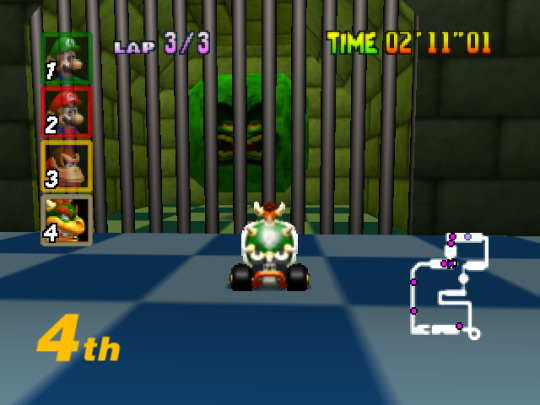
Blast Corps - Nintendo 64, February 28th
February’s position as most boring month of the year is shaken up a bit by having a uniquely designed Rare game slammed into its 28-day long face. Blast Corps is the puzzle-action game where you take control of several vehicles to destroy homes and buildings in order to prevent a nuclear warhead exploding in the coolest incarnation of Cold War politicking ever seen in a video game. Calling Blast Corps a “hidden gem” these days is like calling Celeste a hidden gem - it impresses nobody and makes you look like a dick.
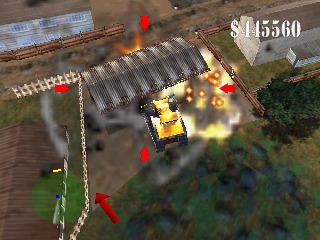
Turok: Dinosaur Hunter - Nintendo 64, March 4th
The N64 was home to a surprisingly large number of above-average shooters despite its muddy graphics and small cartridge space - Turok is one of these, a great FPS game where you shoot the SHIT out of dinosaurs. Brett Atwood of Billboard said it was like Doom and Tomb Raider mixed - Doom Raider, if you will. I say it isn’t - there’s no demons, and there’s no polygonal breasts to poke dinosaurs’ eyes out with!
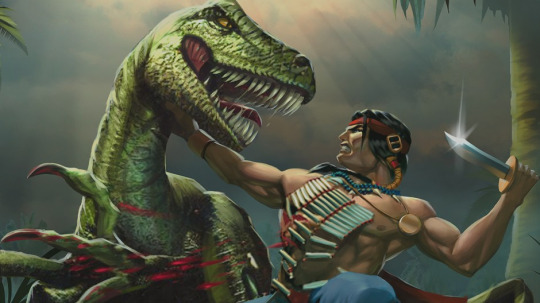
Castlevania: Symphony of the Night - Sony PlayStation, March 20th
What is a retrospective? A miserable little pile of opinions. I’ve only recently played through SotN for the very first time on a TOTALLY LEGITIMATE copy with a CRT filter. Bloody good (geddit?) game, that takes the repetition of its predecessors, improves on it in basically every conceivable way, and combines it with special effects and graphics that even 23 years later had me going “ooh, that looks quite good!” Symphony’s music and audio design are wonderfully paired with a deeply enjoyable experience that’ll have you saying “mm, maybe just one more room?”
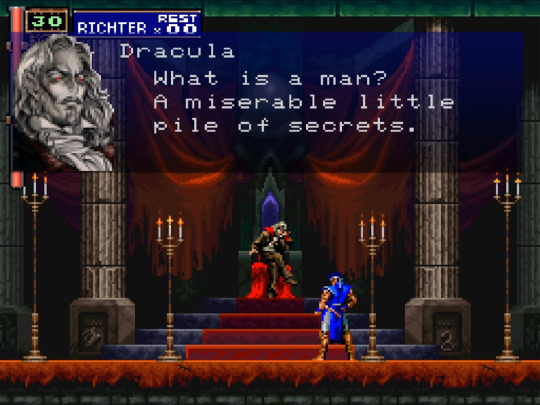
Tekken 3 - Sony PlayStation, March 20th
Also releasing from the Land of the Rising Sun that day was Tekken 3, which many believe is still one of the best fighters ever made. Tekken 3′s combat is so fast and responsive that it’s better than some games made today. T3 is also the best and easiest way to knock seven shades of absolute shite out of your friends without risking a massive head injury or a trip to the headmaster’s office... where you could also challenge him, but only if he plays as my favourite Not-Guile-or-Ken character in gaming, Paul.
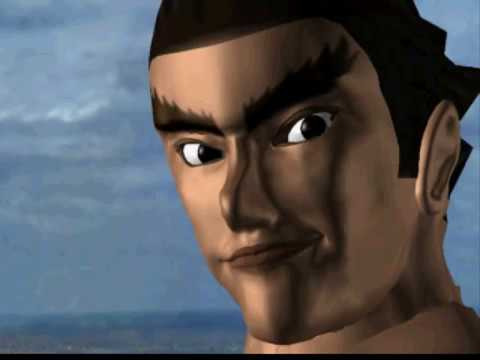
Sonic Jam - Sega Saturn, June 20th
The moment Sega realised that re-packaging old Mega Drive games would net them serious cash - although unlike later collections, this is a strictly Sonic affair, and has a neat little 3D world to run around in as a sort of hub world. Sonic X-Treme proved that Sonic Team would have to work hard at getting the fastest thing alive into 3D space properly: Jam is the sort of test ground for it too. It features some genuinely good emulation work for 1997, although it’s basically the gaming equivalent of going round to your grandparents at Christmas only for them to give you the exact same gifts you got in 1991, 1992 and 1994 but wrapped in a bow to make you think it’s different. What are you lookin’ at, you little blue devil?
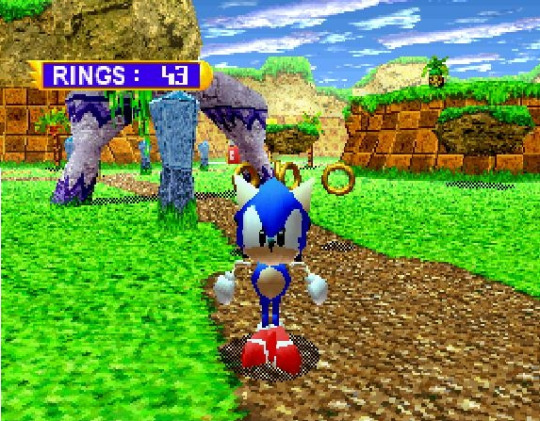
Star Fox 64 - Nintendo 64, June 30th
So there’s this German company, right, called StarVox. Nintendo look at Europe and say “shit, we don’t want another lawsuit... after all, we’ve done three this year!”. So they give us in the PAL region the exciting title of Lylat Wars which as far as I know means absolutely fucking nothing in the context of the game. They’re still called Star Fox in-game too so what was the point? Anyway, fun 3D shooter with graphics that’ll make you do a barrel roll off the sofa and onto the power button to make the brown and green blurs a little easier on the eyes. Hello 2007, I’ve come back to make old references with you!
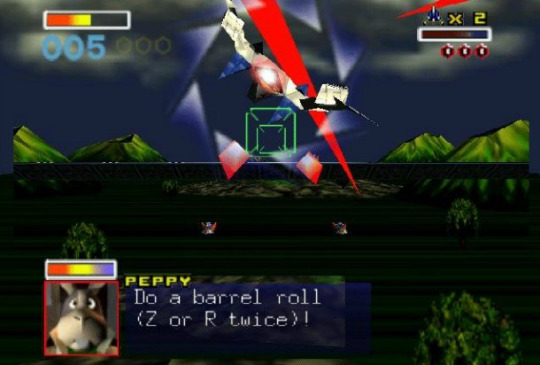
Carmageddon - Windows, July 30th
The game so scary it was BANNED in the UK! More like the game so fucking shit it was banned. Carmageddon is so deeply boring to play on PC that I can only imagine that Stainless Games made it tasteless by 90s standards simply to ramp up demand - much like another game we’ll be covering soon.

Herc’s Adventures - Sony PlayStation, July 31st
“And they said Kratos was the best hero? Shish... they got it wrong, sister! Hercules is clearly better... he even has a coconut weapon.” A surprisingly fun overhead action game that most people only know for... well, I’ll just embed it.
youtube
Mega Man X4 - Sony Playstation, August 1st
A few years ago I tried playing every Mega Man game there is - I gave up at X3 because I was getting bored. Even still, Mega Man bores me - but at least the level design is good. Stay away from the Windows port. Pictured: me in the background yawning.

GoldenEye 007 - Nintendo 64, August 25th
The name’s Intro. Overused intro which I also managed to fuck up twice through the deeply editable medium of text. GoldenEye is like the Seinfeld of console shooters - playing it nowadays you’re unlikely to be amazed but holy shit there’s some absolute greatness in this game. Every sound and every piece of music in GoldenEye is permanently seared into my brain - sometimes I’ll just hear Facility or Frigate in my head alongside the door opening sound and the gentle PEW of the PP7. I mean come on, fucking listen to this and tell me Grant Kirkhope isn’t cool as all hell.
youtube
LEGO Island - Windows, September 26th
The first open world experience I ever had was LEGO Island. It’s still quite good today, utterly deranged animation from the likes of the Infomaniac and Brickster - a cautionary tale for children that giving pizza to high-profile criminals is disastrous for the human LEGO race.
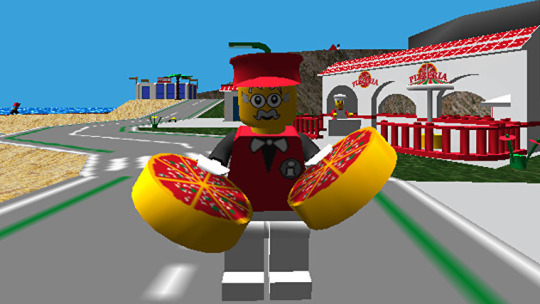
Fallout - Windows, October 10th
War never changes, but franchises do. Fallout’s legendary status in the industry is exemplified in how different it feels. Yes, we had the game Wasteland nine years prior, but until September 97 there was nothing quite like Fallout. From the chilling introduction sequence showing the ruins of the United States to the tragic ending, Fallout is an exercise in pure human misery with the brightest spots of hope it can possibly muster thrown in for good measure. What begins as a tedious isometric point-and-click RPG ends as a minigun-wielding power fantasy, before your entire worth is stripped from you at the finish line. You have 500 days to find a water chip before it’s too late, but you’re constantly being fought by terrifying Super Mutants, irradiated animals, and the biggest monster of all - humanity. See what I did there? If anything, humanity in Fallout’s setting would be the greatest unifying force possible against the horror of the outside world. But how is it? It’s dull, it’s sluggish, and it’s really hard to get into even if you’re already a fan - but push through that and it’s worthwhile to see exactly how far the series got before Todd Howard said “eh fuck it” and had the whole thing dipped into an FEV vat.

Grand Theft Auto - Sony PlayStation, October 21st
To put it simply, the first in the GTA series is now nothing but a novelty. It has an irritating camera, wonky controls, poor graphics and deeply repetitive gameplay. But thank fuck it exists, because without it the Rockstar story may have been very different indeed. It’s quintessential cops and robbers gameplay, spanning across Liberty City, Vice City and San Andreas in one game, but with maps so far removed from their modern incarnations they may as well be named “Not New York, Possibly Bristol and Orange Town”. People really fucking hated Hare Krishnas in the 20th Century, didn’t they?
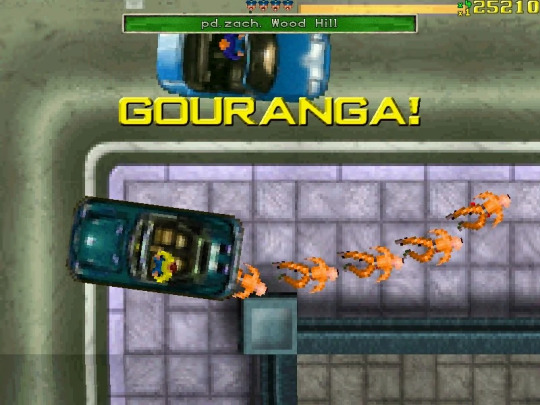
Crash Bandicoot 2: Cortex Strikes Back - Sony PlayStation, October 31
A hard one to talk about, honestly - it’s more Crash and better than the first one. It looks great, and Crash controls so well compared to his first outing. It’ll also keep you playing for 100%, fiendishly addictive and unashamedly difficult. Had a weird cover that moved with your head.

PaRappa the Rapper - Sony PlayStation, November 17th
Type type type the words into the box! (Type, type, type - uh oh - the box?)
PaRappa is a gorgeously stylised rhythm game about rapping to steal the heart of the girl of your dreams - which involves learning karate, getting your driver’s license, selling bottle caps and frogs, making a cake, desperately trying not to shit yourself, and finally performing live on stage. Every one of its segments is so well-produced that they’d genuinely sell like ghost cookies in this era of shite rap. Notable for producing the greatest Jay-Z backing track ever made.
youtube
Sonic R - Sega Saturn, November 18th
Sonic R is absolutely FINE with vibrant textures, interesting levels, neat gimmicks and decent controls. But I’m gonna talk about its fucking AWESOME soundtrack by Richard Jacques and T.J. Davis, an eclectic mix of Europop and New Jack Swing - even thinking about it is bringing tears of absolute joy to my eyes hearing Super Sonic Racing in my head. You’ve got the main theme, Living in the City, Can You Feel the Sunshine, Back in Time, Diamond in the Sky, Work It Out and Number One - all of these are absolute club bangers and genuinely wouldn’t be out of place in a 90s disco.
youtube
Tomb Raider II - Sony PlayStation, November 18th
Lara Croft returns to single-handedly endanger every species on Earth. TR2 is really good, the exploration and puzzle-solving aspects of the first game expanded upon here and the gunplay remaining just as punchy. Lara’s got a fully-functioning ponytail which absolutely boggles the fucking mind - a lot of work went into Lara’s hair for the 2013 reboot, so I can’t imagine the amount of man hours it took to get fluid(ish, come on, it’s the PS1 we’re talking about) hair movements in 1997.
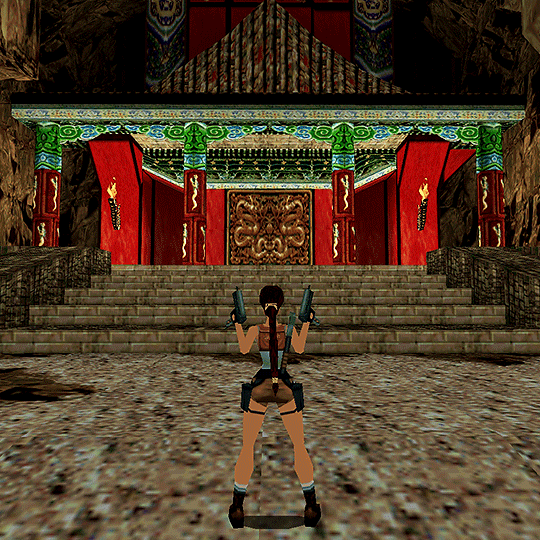
And really, that’s all I played from 1997. I’ve left out big hitters like Quake II, Gran Turismo and Diddy Kong Racing, but I simply haven’t formed an opinion on them yet. Maybe in a future post.
Thanks for reading.
#playstation#ps1#n64#nintendo#jontron#castlevania#carmageddon#mega man#hercules#star fox#mario kart#every copy of mario kart 64 is personalised#sonic#saturn#goldeneye#oddworld#retrospective#1997#gaming#retrogaming#fallout#grand theft auto#gta#parappa#jay-z#lara croft#tomb raider#sonic r
8 notes
·
View notes
Text
Matt Giguere’s Top 10 Handheld Games of 2019
Handheld gaming is in a weird spot. Beyond the plethora of mobile devices running iOS or Android and the app store fronts they offer; the handheld market has now been distilled down to one major device in 2019. Lo and behold, Nintendo, once again sits alone on the hill. While the Switch has seen great gains in maintaining a constant flow of software on its platform, the vast majority of their releases are either mobile ports or older games from generations past. It is amazing on how much has been released so far, but what makes a handheld game a “handheld game” now anyway? When your choice can be a small bite sized game like BOXBOY! + BOXGIRL! or a massive single player game like Tales of Vesperia, there really isn’t much of a difference what a handheld platform can offer compared to the home consoles for the types of games that can be played. As the Nintendo 3DS and Sony PlayStation Vita sunset into their legacy years, there seems to be a wider line on what can be considered a handheld game.
Nintendo did release a portable only version of the Switch this year, dubbed the SwitchLite. Considering that most of my playtime has been in handheld mode, I picked one up shortly after release. After a few months of playtesting, I think this will be my go-to system for the foreseeable future. I adore the form factor size. The original Switch still works great for quick pick up and play in my home, but I find the new model easier to hold in my hands and store away when I’m travelling. The dedicated directional pad, as opposed to separate buttons because of the nature of the detachable joy-cons, is a big selling point for the myriad of 2D platformers now on the system. I sometimes miss the “HD Rumble” feedback that had to be cut, but that is a small gripe. If you don’t care for playing games on the big screen in a higher resolution and varying framerate, I highly recommend picking this dedicated handheld up.
Admittedly, a lot on my best of 2019 list are games that can be enjoyed on the big screen, especially with the convenience of the Switch’s hardware. Of the games I played this year, I think this smattering represents a healthy dose of what managed to present a case that gaming on the go is still well alive and ever changing.
Top 10 of 2019 or the Hollow Knight Memorial List*
*Sometimes when making a top list our favorite thing came out in a different year or is so clearly ahead it is a lock of number 1 across every critic. This year Hollow Knight from Team Cherry captivated me like nothing else that released this year. Alas, this game came out in 2017. So instead of placing it on my official list for 2019, it takes the honor of being my list’s name. This Metroidvania style exploration platformer is full of surprises, sometimes subverting my expectations when I thought there wasn’t anything left to uncover. If you have a Switch, I highly recommend checking out one of my favorite games in the genre since Metroid: Fusion.

10. My Friend Pedro (Switch, Xbox One, PC)
An action, score-based shooter that I’ve had my eye on for years since seeing the gif put out by publisher Devolver Digital and developer Dead Toast Entertainment. The nature of this very tricky to pull off and even harder to master game lies in its focus on style. Moving across short levels on a 2-D plane, you must, roll, spin, flip, kick, skate, and, of course, kill combo as many enemies to place a high score and a top rank. While there is a story to keep the drive of the game moving forward, I wouldn’t say that should be the guiding factor to check this out. Rather, I found the quick get up and quick play of a level or two perfect for on the go gaming. Once the controls click, this game really delivers on its promised “Bananas” style.
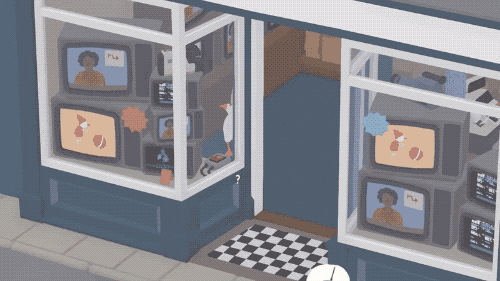
9. Untitled Goose Game (Switch, Xbox One, PS4, PC)
“What if Hitman, but a Goose?” is probably the most quoted pitch heard for this small, but very charming game by developer House House. In it you play as, well, a goose who terrorizes a small town from every front. From untying shoes so people trip to locking helpless victims in garages, no one is safe from this feathered menace! Okay, so the Hitman comparison is apt, minus the extreme brutality, for this sandbox-lite adventure. The best I can compare it to is an interactive toy; one that is unique in how the player can approach a situation and explore the possibilities of what can and will happen within the rules of the program. It might not have the deep experimentation of a larger game of its kind, but I found its calm and lighthearted nature makes this a very stress-free experience, especially when you are the one dealing out all the harassment.

8. SteamWorld Quest (Switch, PC)
I don’t normally go for card-based RPGs, but when Image & Form provide a new adventure in the SteamWorld universe, I had to check it out. This might be the one that changed my mind, because after several turns, I was hooked. The adventure itself keeps things relatively jovial with plenty of jokes and wit to keep the story moving forward. It can be easy to stick to one group of characters, a limit of three per battle, but I find more enjoyment in the battle system when different combinations are put into play. The battle system also provides linked combos that offer bonuses and stringing cards together in a row also adds more to the strategy. Building a potent strategy is where I found the most engagement in this RPG, and all the trappings around the edges made this one stand out in my mind. A good starting point in the genre for those curious.

7. Baba Is You (Switch, PC)
A tough logic puzzler I think goes the extra mile with its charm and style. You play as Baba. Or, rather, Baba is you, or a wall, or section of water, or a skull, or... well you get the point. The goal in each stage is to reach the “Win.” What is the “Win?” Most of the time it is a flag, but really it can be anything. Using a simple push function mechanic that many top-down puzzlers have used before, the twist comes in that you can have these sentence blocks to push around and affect the game’s logic. For example, if the winning object is out of reach by a wall that forces you stop (“Wall is Stop”) you can push one of the sentence blocks away so you can pass through the wall. Even making a sentence to “You is Win” will also result in a victory. The difficulty can be a bit stiff, but I would often find myself just thinking about a stuck puzzle while out and about and think of the solution as a sort of epiphany. Even when getting stuck on a tricky brain teaser, the game offers multiple paths so you can keep progressing through. Certainly, Baba Is You has been on my mind since first playing it.

6. What The Golf? (Apple Arcade, PC, Switch TBD)
If Desert Golf is the pinnacle zen of the golf sport genre, What The Golf? embodies its “party mindset.” Yes, it is golf, and yet, it becomes something more than just golf. Sometimes you will find yourself having to hop across a very familiar level. Other times you will have to coordinate trick shots while being an exploding barrel. And sometimes, there’s just good old-fashioned bowling. What The Golf? will keep you on your toes, especially if you are fond of video games released prior to this. I won’t spoil some of the surprises in store, but some of them had me in stitches from laughing so hard. It would be nice to fully outright buy this game on the iOS App Store, but for now, a subscription to Apple Arcade is the only way to play this on the go.
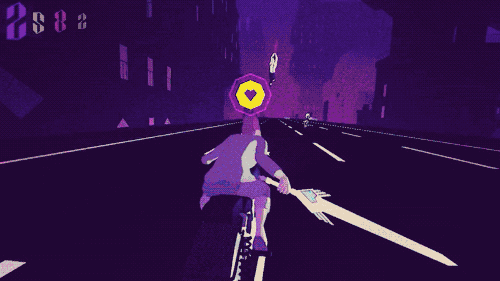
5. Sayonara Wild Hearts (Switch, Apple Arcade, PS4, PC)
Another Apple Arcade exclusive for mobile (you can also buy it on the Switch at this time), this one showcasing music and style. If there is one thing that counts in making an impression on me, it’s presentation. Sayonara Wild Hearts is described as a pop album video game; one you experience as much as you listen to. The format seems simple at first. Guide your character along the track and collect different items for points to rank a high score while also dodging obstacles. Soon though, things start to mix up as fast as the soundtrack’s BPMs start to pump up. While the touch controls are adequate, I think for certain spots, a physical controller would have been nice. However, there are movements that are far easier to pull off using a touch interface, such as time hits reminiscent of music games like Elite Beat Agents. This gem of a game needs to be experienced at least once, not only for the wonderful soundtrack, composed by Daniel Olsen and Jonathan Eng and featuring Linnea Olsson on vocals, but also to see the twists and turns the game takes. This little game surprised the hell out of me, and I think it will be one that I will revisit again based on its production.

4. Ape Out (Switch, PC)
Sometimes we all need to get out. Especially when you are an ape stuck in a cage. That’s the conceit of the top-down, twin stick, hyper violent, and super stylized game, Ape Out. There is one goal: Be the ape and get the hell out! The concept is very rudimentary which I feel allows the game to shine. You will have to run, dodge, grab and toss enemies to reach the exit while the only advantage is being able to take three hits before going down. Enemies have guns that the player can’t use in the typical way. Instead, grabbing a foe allows one immediate shot to be fired from the grappled target. Used strategically, it can get you out of a lot of close calls. Other enemies can have bombs or body armor to keep this from being too repetitive and thanks to the game’s art style, they all look distinct so there’s no confusion on who you are fighting. Levels are procedurally generated as well, so even thinking on memorizing enemy patterns doesn’t always work. The fluorescent color palette and very minimalist style, like that of a Saul Bass movie poster, highlights the chaos and violence without making it too gross or unappealing. Even the soundtrack is minimalistic, utilizing only jazz percussion that plays out dynamically as the action plays out in real time. A feast for the eyes and a challenge on the thumbs.

3. Katana Zero (Switch, PC)
Taking a page from one hit kill action games like Hotline Miami, Katana Zero plays out at first like a typical note from the genre, right down to its ‘80s aesthetic. You clear room after room of enemies, slashing with your katana, wall jumping to high points, and focusing time to slow down and either dodge or reflect projectiles. A lot of this game is a throwback thanks to its choice of graphics, 2D platforming and story points from movies like Drive and Leon: The Professional. It is thanks to the presentation that makes this game shine for me. The story, music, graphics and gameplay presentation are what makes Katana Zero so high on my list. Clearing rooms is fast paced and quick, with messing up only taking several seconds to get back into the fray. While the loop of the game can get a bit repetitive, there are plenty of surprises that change up the standard formula of the game as you progress. The story does a nice job of not only driving things forward, but also tying in gameplay concepts into the narrative. The music is a healthy blend of synthwave and some very heavy and experimental electronic tunes (one that I’ve had on repeat most of the year). The overall games is fairly short and ends on a bit of a cliffhanger, but there are speedrunning modes and secrets to uncover from replaying. Katana Zero stands as one of the best independent games this year.
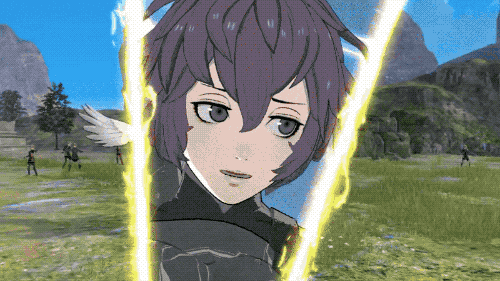
2. Fire Emblem: Three Houses (Switch)
There was a time when Fire Emblem was on the ropes, becoming a lagging franchise that was not connecting with strategy enthusiasts on the home consoles. Then in 2013, things changed with the release of Fire Emblem: Awakening on the 3DS. Nintendo and Intelligent Systems had intended that game to be the last in the series. Instead, we got another 3 (and 1/2) games released on the 3DS this past decade. Now it’s time to pass the torch onto the Switch and boy did they deliver on a packed adventure! Instead of just following one or two paths like most FE campaigns, Three Houses offer up to four different story playthroughs that each roughly takes about 50 hours or more to complete. There is also a vast amount of customization thanks to the setting being centered around a military school and teaching classes. If you love watching meters and bars fill up, there are tons of those to be had in Three Houses. Even though not every aspect is well thought out (the amiibo gazebo comes to mind, even though it is the best named mechanic), the cast of characters and support conversations (all fully voice acted) provide some rich storytelling from a character development standpoint. Do check out this game as it is one of the best in the series.
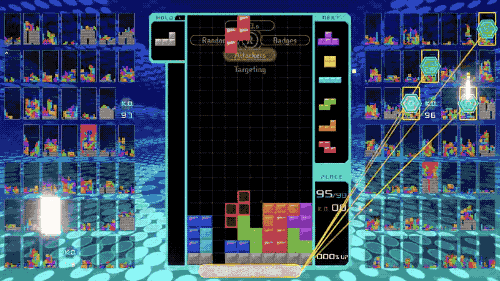
1. Tetris 99 (Switch)
“Where are we dropping, Blocks?” In a personal first for me, a multiplayer game has taken my number one spot. Tetris 99 is just that. Tetris. However, it’s you versus 98 other players in a battle royal style completion. Released as a free download to Nintendo Switch Online subscribers, it now has multiple versions that can be bought as well. Thanks to constant updates and weekend tournaments, the online community is still strong, so finding matches is quick and painless. Playing against such a wide number of challengers turns the typical Tetris strategy on its head. Racking up combos instead of quickly clearing lines, for example, is one way to secure victory, but leaving too many gaps and holes can prove disastrous if you suddenly become the target of a handful of players. Even though I have yet to secure a 1st place finish, the nature of Tetris keeps me coming back for more. Whether it’s facing against bots, friends, marathoning solo or playing the featured battle royal, this is a fun version of Tetris to be had.
#matt giguere#goty#gotggoty2019#my friend pedro#untitled goose game#steamworld quest#baba is you#what the golf#sayonara wild hearts#ape out#katana zero#Fire Emblem Three Houses#tetris 99
2 notes
·
View notes
Text
Farewell SNES - Aug 1995
It was now midway into 1995. I was seventeen years old, young, free and single. College was going well, I was out partying every other night and everything felt so exciting. During this time there was a definite buzz in the air, anything seemed possible. Video games, music and movies were all flourishing and their influences could be felt throughout all popular culture.
We were of course in the midst of the Britpop era, Britain was cool once again and I was constantly listening to Oasis and the Prodigy on my Sony Walkman plus a bit of TLC and later that year Coolio’s Gangsta’s Paradise on repeat. My clichéd 90’s wardrobe mainly consisted of baggie jeans, cream coloured grandad shirts combined with a woollen waistcoat and topped off with a black bomber jacket with a bright orange lining, classy!
With access to more money thanks to my part-time job spinning pizzas at Asda more cinema excursions were on offer with notable films that year included Dumb and Dumber, Bad Boys and the Usual Suspects. US TV was also on the up with programs such as Friends and ER finally getting their British premieres. The mid 90’s was indeed a great time to be a teenager.
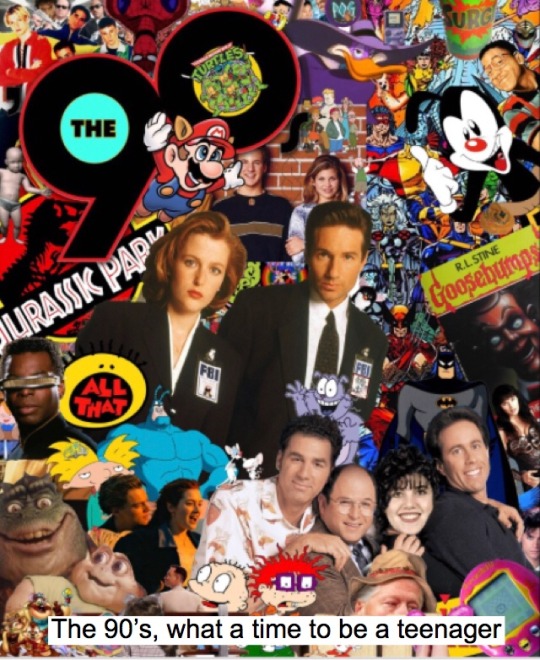
Life was good apart from my gaming habits which had come to a slight hiatus. With the exception of a few Blockbuster rentals my Super Nintendo library had stayed near enough the same since my birthday. The last major purchases had been back in February with Donkey Kong Country and NBA Jam Tournament Edition which Ben and I still continued to play on occasion. With my college commitments ramping up and a busy social life by the summer I found myself playing video games far less. My Super Nintendo had begun to collect dust and I was no longer rushing out each month to buy the latest issue of Super Play or NMS. It wasn’t that I was growing bored of gaming it was simply down to the fact that no upcoming releases had peaked my interest. With Nintendo focusing on its up and coming N64 (or Ultra 64 as it was known back then) new quality SNES titles had started to dry up. What I needed was a new console injection to get me excited about gaming once again. Obviously being a massive Nintendo fanboy the N64 would have been my go-to system but with no official release date yet confirmed this would have to wait.
I would make one last purchase for my Super Nintendo at the end of August of 95, that game was the NTSC version of Killer Instinct. Being a massive fan of one-on-one beat ‘em ups and having thoroughly enjoyed Rare’s last offering Killer Instinct seemed like an obvious choice. Great graphics combined with some decent gameplay made for a worthwhile investment plus there was yet another free CD. This time it was titled Killer Cuts and unlike Donkey Kong Country’s freebie this CD actually featured the in-game music.
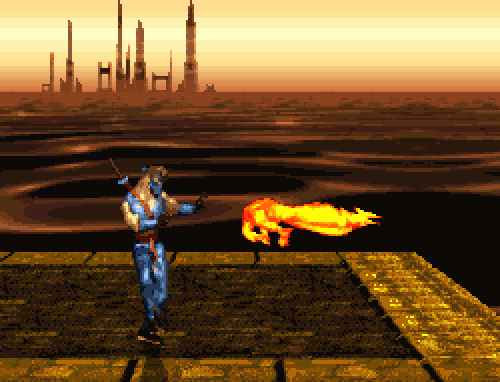
For the next week I would play through Killer Instinct many times over trying to perfect Jago’s ultra twenty one hit combo but my yearning for a new console persisted. After a bit of deliberating I decided that new console would be the Sony PlayStation which was being hyped everywhere and would soon be released here in the Uk. Ever since first owning my Sega Master System back 1989 I was constantly on the lookout for the next big thing. If it was new I had to own it and that’s where Sonys new CD based console came in.
I had been following the development of the PlayStation ever since it was first revealed that Sony was going to enter the video games industry. Like many other people at the time I originally laughed at the concept of the electrical company who had designed my Walkman were even considering taking on both Nintendo and Sega at their own game. Overtime however my mind was changed. The console felt more mature, more edgy than the competition. The media was hyping Sony’s new console as the future of gaming and after reading about its 3D polygon graphics, CD quality sound and the fact that Square has decided to release their latest Final Fantasy instalment on the system my mind was made up.
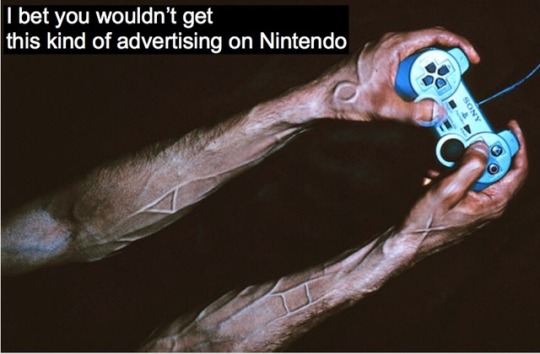
The PlayStation was due to be released on 29th September and with shops taking preorders it was now or never. Less than a month after buying Killer Instinct I headed to Electronics Boutique with my boxed Super Nintendo a bunch of games including Secret of Mana and Super Street Fighter 2 to do another classic trade in. The launch price was £299 so to make up the final amount I emptied my Halifax Young Savers account of £110 (to my parents disappointment) and preordered a brand spanking new Sony PlayStation.

Looking back this was the end of an era for me as far as video games were concerned. For the last three years I had been a proud owner of a Super Nintendo. From that initial moment of taking control of Mario in Super Mario World to finally being able to play Street Fighter 2 in my own home this little grey box had entertained and amazed me to the very end. This glorious console had introduced me to many classic games and created so many wonderful memories. It wasn’t just the games which had made a lasting impression on me either. The design of the SNES was timeless, the innovative control pad with its distinctive coloured buttons, the countless Nintendo inspired magazines plus the friends I’d met who shared the same passion have all added to my love of the console and it would go on to be my all time favourite gaming system as an adult.
Thank you Nintendo, you pulled a blinder with this one

1 note
·
View note
Text
Advent Calendar 14: Nintendo's Crazy Ex
Greetings, and welcome to Advent Calendar 2022! This year we're being self-indulgent and rambling about video games.
As usual, the Advent Calendar is also a pledge drive. Subscribe to my writing Patreon here by TOMORROW for at least $5/mo and get an e-card for Ratmas; subscribe for $20/mo (and drop me a mailing address) and you'll get a real paper one!
I hope you're all having a happy winter holiday season. Let the nerd rambling commence!
Gather 'round, children, and let me tell you the story of How The Playstation Came To Be. Once upon a time, there was a Super Nintendo Entertainment System. The SNES was a shiny, shiny thing in 1991 (1990, as the Super Famicom, in Japan). A spiffy new 16-bit games console that played all the latest Mario and Castlevania and Metroid games, its main rival was the slightly older Sega Genesis (né Sega Megadrive, 1988 in Japan, 1989 in North America). The two coexisted for some time with only the usual sibling rivalry, where Sega pulled an attitude and claimed to do "what Nintendon't", and Nintendo pointedly ignored them while pointing at some plumbers from Brooklyn with an inexplicable hatred of turtles.
One day, Sega learned a new trick. The older Nintendo bro, the Famicom, had come up with an add-on device that let it play games off diskettes; the little Sega Megadrive thought about this and went, yes, but what if I used CDs instead? CDs were super cool, cutting-edge, space age tech at the time, which was not coincidentally also 1991. Compared with cartridges, CDs had an unimaginable amount space to fill, and since they were for music first, Sega threw in a nicer sound chip to sweeten the deal. Thus was born the Sega CD.
Nintendo looked at that and grudgingly admitted they had a point.
Obviously the thing to do was steal this concept, so Nintendo got to work on a CD add-on for the SNES. Neither company worked with CDs or audio tech themselves; Sega had partnered with JVC for the Sega CD. (JVC stands for Japan Victor Corporation, by the way, the Japanese subsidiary of RCA Victor, the people who used to use the painting of a terrier listening to a phonograph as their logo. The original painting was titled "His Master's Voice", which title eventually ended up, through a complicated series of divestitures and acquisitions, as the name of the HMV record stores in several Commonwealth countries.) Nintendo phoned up Sony, who had developed the original CD standards in conjunction with Philips Electronics. Together they started work on a prototype equivalent of the Sega CD, accurately if boringly titled the Super NES CD-ROM.
The unveiling at the Consumer Electronics Show was an event. Sony proudly unveiled the fruits of its labor, a combination SNES-cartridge/CD-ROM machine they called the "PlayStation". It received many oohs and ahs from the audience. The very next day, Nintendo revealed its half of the project, a CD-ROM add-on for the SNES, produced in partnership with... uh, Philips. Philips Electronics. You know, Sony's best friend.
To say Sony was angry was an understatement. They were livid. It just wasn't working out, Nintendo said. Sony kept asking for things -- licensing fees, rights, content control. Nintendo and Philips just had long term goals that were so much more compatible! Mainly because they made Nintendo more money. Surely Sony would understand. It was just better for business.
Fine, said Sony. We'll just make our own console! With blackjack! And hookers! I'm not actually kidding about that part, a lot of the early Playstation marketing centered around the fact that Sony would let you publish games including adult things like sex, violence, drugs, and naughty words, which were all still very much banned in Nintendo titles. This ultimately led to Sony landing the Grand Theft Auto console ports, and we all know how that turned out.
The SNES CD-ROM project eventually stuttered to a halt, and nothing of the sort ever came out, even in Japan. The backlash soured Nintendo on CDs so much that they refused to make the switch with everybody else for their next console generation, opting instead to use ROM cartridges in the Nintendo 64. This bout of sour grapes actually lost Nintendo several of their loyal publishers -- the Golden Age of JRPGs started on the Super Nintendo, but chafed at the space restrictions of the N64. The biggest, fattest rat to jump off that particular sinking ship was Squaresoft, who started developing for the N64 but ultimately opted to publish the smash hit Final Fantasy VII on Playstation, where the game could span three CDs.
Nintendo continued to drag its feet on disc technology through the DVD era, declining to include DVD-Video playback on its GameCube, Wii, and WiiU systems, even though all three use DVD drive mechanisms, and are physically capable of reading DVD discs (mini-DVD in a GameCube, without a case mod). Sony, in contrast, coughed up the licensing fees and advertised the shit out of the DVD player function of their Playstation 2. The PS2 didn't just wipe the floor with the Wii (and the Xbox), it became the best-selling video game console of all time.
The Nintendo/Sony PlayStation fell into the black hole of history. For almost a quarter century it was thought that none of the prototypes had survived, but in 2015 a single example was discovered in a bankruptcy auction of random stuff from a completely different company where a Sony CEO had once worked. The creaky, dusty, substantially-broken thing was presented to Benjamin Heckendorn, aka "Ben Heck", a passionate nerd who accidentally invented a career for himself about two decades ago by hacking apart an Atari 2600 and reassembling it into a handheld.
youtube
He did a full teardown of the machine on The Ben Heck Show, a series he filmed for the content provider element14, and managed to get it working, in conjunction with a boot ROM mysteriously leaked to several prominent members of the retrogaming/emulation community. There is no known surviving software for the machine, but several people have verified that homebrew games will play.
from Blogger https://ift.tt/GUN1FkL via IFTTT -------------------- Enjoy my writing? Consider becoming a Patron, subscribing via Kindle, or just toss a little something in my tip jar. Thanks!
0 notes
Text
Best Games of 2020
2020 was a lot. It will be remembered for many things far above and beyond video games. COVID-19 shut the world down in a way never seen in my lifetime. It changed day to day life for many of us, and cost many of us loved ones. It was also the year when the ugly parts of our capitalist society were shown in broad daylight. It feels like 2001 again in that our lives will be divided into pre-2020 and post-2020.
For me personally, I was able to keep my job and work from home, and no one close to us died to the pandemic. We stayed home as much as possible, wore masks, wiped down groceries, and did our best to control what we could. It can be hard to talk about stuff like video games and sports with the usual sort of fervor when the world feels like it’s falling apart around us. It feels like playing the violin aboard the Titanic. But self-care is especially important in times like these, and it’s healthy and necessary to close Twitter, or for-the-love-of-god fucking Facebook and get a breather sometimes. Finding a balance where I could stay informed without completely submerging myself in misery wasn’t always easy.
And so. 2020 was a pretty good year for games, though it must be noted that there is a cost to that escapism - the industry is rife with stories of abuse, burnout, and coverups from companies such as Ubisoft and CD Projekt Red, Naughty Dog, and many others. That can add an additional layer of exhaustion to what is supposed to be a relaxing escape. So I can understand the people who say they don’t want to hear about abuse in industry, they just want the games. But also, fuck those people. “I don’t care if you suffer to entertain me, I just don’t want to hear about it.” Fuck the whole entire way off.
But I digress. Like most years, I played a lot of games. I played a lot of coop beat-em-ups with my kids this year. Minecraft Dungeons and Streets of Rage 4 didn’t make the list, but I spent hours playing them with my middle child. And it wasn’t a 2020 release, but I had a blast playing River City Girls with firstborn. It was a good year for fans of tactics games with stuff like Gears Tactics, Troubleshooter, Wintermoor Tactics Club, and Fae Tactics. 2020 also saw new console releases, though the launch lineups were especially thin.
Gaming-wise, 2020 was the year of Xbox Game Pass for me. I spent most of this console generation (justifiably) dogging Xbox for their lack of platform exclusives, but I decided to pursue an Xbox Series X before a Playstation 5. Game Pass is the main reason for this. The “Netflix for games” thing has finally become a reality, and Sony just doesn’t have an answer for the bonkers value of Game Pass. We head into the new console generation with Microsoft leaning heavily on Game Pass subs, Sony still banking on a few console exclusives, and Nintendo, uh, doing their own thing over there. What a fascinating time for the industry.
Honorable Mention
It’s an honor just to be nominated.
Monster Sanctuary
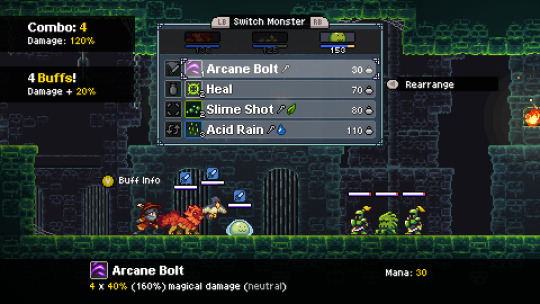
If you start with Pokemon, strip away the anime, and mix in a healthy dose of metroidvania, you have Monster Sanctuary. This means there are monsters to collect, level, and evolve, and lots of combat revolving around elemental strengths and weaknesses. And I am here for that shit. A game like this lives and dies by its combat, and it’s very satisfying here. The game has plenty of choices about which skills to focus on for each monster, which gear to equip, and which monsters to keep in your active roster.
That said, between a couple of nasty difficulty spikes and some super-frustrating puzzle rooms, I was close to walking away from the game on multiple occasions. It’s a testament to the game’s quality that I kept coming back to it.
Animal Crossing
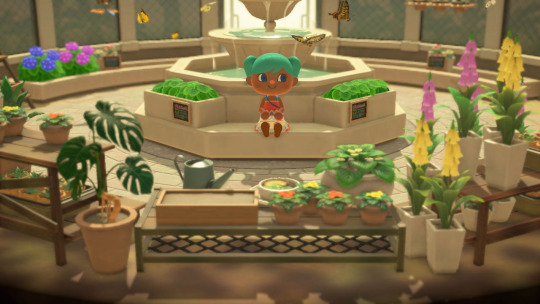
Animal Crossing on the Gamecube is one of my favorite games ever. Each game in the series since the first has felt like a small incremental change from the original. I played Wild World on the DS quite a bit, City Folk a bit less, and A New Leaf not at all. I was thinking that maybe enough time has passed that I could get wrapped up in New Horizons, but I fell off it after a month or two.
I’m wondering what I would want from a new Animal Crossing game, and the answer is nothing. How much can you change the game and still have it be Animal Crossing? I don’t think the game is bad by any means. My whole family shared an island community for a couple of months. It’s impossible for a new game in the series make me feel the way that first game did.
The most memorable part of New Horizons is the museum. The museum is huge and absolutely lovely, with fish, bugs, fossils, and art each having their own wing. There were a few nights where the tranquility of the museum made for a nice end of the day.
Tell Me Why
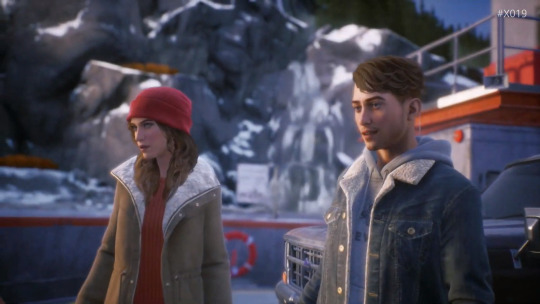
My wife, firstborn, and myself have made a nice routine of playing through “choices matter” games together (starting last year with Detroit Become Human and following up with Life is Strange 2). Tell Me Why is the latest one one of these we tackled as a group. These game have created some memorable moments for us; who could forget their child yelling for them to “shoot the hooker”? (thank you, Detroit Become Human).
Tell Me Why was on my radar because it’s One of These, but also because it features a transgender protagonist. As a parent of a trans child, I was both excited at the prospect of this and also worried that it is such an easy thing to fumble. I’m pleased to report that DONTNOD handled the writing of the trans person very well without being hamfisted, preachy, or tryhardy with it. The character of Tyler is a believable trans man, and the topic is spoken of matter-of-factly without placing special focus on it; being trans is a part of Tyler’s story, but it’s not the entirety of his identity.
Less impressive to me was the story itself - especially the way it wrapped up its main conflict. The game trades in the idea of memory being imperfect, which is fascinating in and of itself, but I did not like it as a game mechanism. How did this REALLY happen? One character remembers it one way, and the other remembers it differently. Choosing between them felt cheap and hollow to me; I want you to tell me what happened, don’t ask me to choose. Still, I enjoyed my time with the game, and it feels like a step forward in mainstream storytelling for LGBTQA characters.
Ghost of Tsushima
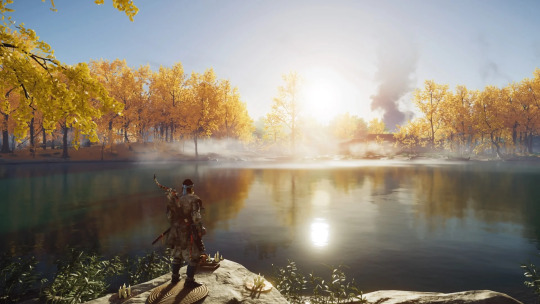
Ghost of Tsushima is flat out gorgeous. Practically every area and every moment in the game is begging to screenshotted to the point where it can sometimes pull me out of the game world a little bit. That’s not necessarily a complaint because, as I said, the game is freaking beautiful. But every part of the world looking like a painting makes it feel more like it takes place in a fantasy world and less like a game from feudal Japan.
I also had some ludonarrative dissonance going on with the game; you play as Jin, one of the few surviving samurai in his homeland which has been invaded by the Mongols. His uncle is being held prisoner, and combatting the occupying force would be impossible without using dishonorable techniques like hiding, attacking from a distance, and ambushing from the shadows. I, however, have no qualms and savored every opportunity to catch my foes unaware. So Jin voices his doubts, then goes into a camp and proceeds to cut his enemies down from shadows as I cackle with glee.
Ghost of Tsushima also combines dark souls-esque* combat with Ubisoft-style open world gameplay where you’re hunting down icons on a map. That kind of open world game is hard for me top stick with, especially after I spent ~30 hours with Assassin’s Creed Origins early in the year. All of makes it sound like I’m pretty down on Ghost of Tsushima, which I’m not. I’m hoping I’ll come back to it at some point when I have more of an appetite for One of These.
Crown Trick
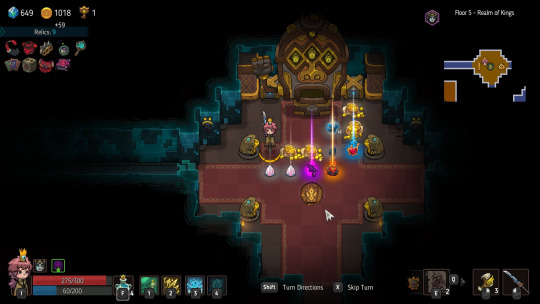
My Dungeons of Dredmor hole has not been properly filled in a long time. Chcocobo’s Mystery Dungeon is the closest I think. These games are what I think of as roguelikes, though the progression between runs makes them roguelites. *tips fedora*
Crown Trick is a turn-based dungeon crawler where the map is a grid, and each time you act, the enemies act. Add to this clockwork puzzle gameplay a good variety of weapons, relics, and events and you’ve got a lot of replayability. It doesn’t have Dredmor’s ridiculous combination of skill classes, but it does have a neat Mega Man-esque system where you defeat minibosses and add their skill set to your build.
Top 10
10. Star Renegades
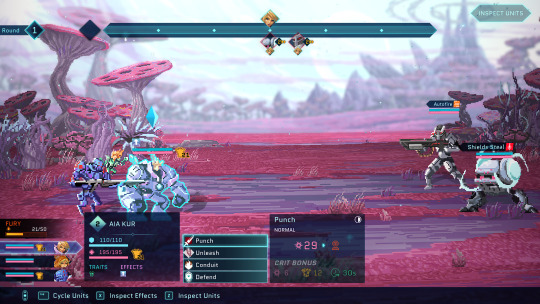
Star Renegades was not on my radar at all until I heard Austin Walker talk about the game on Waypoint Radio. Two things gave me pause:
- It’s a sci-fi-ass game. It’s a setting I don’t care for. Star destroyers and aliens and galactic battlecruisers aren’t my jam. - Austin Walker’s enthusiasm is infectious. I’ve tried games after hearing him gush over them and those games haven’t worked for me.** That’s not an indictment, he and I just have different tastes.
Star Renegades ticks a few important boxes for me: it has a lot of characters to unlock, it’s highly customizable, and the combat is turn-based with a twist. Every action, whether friend or foe, appears on a timeline. Some attacks will push their target’s action back on the timeline, so there’s a puzzle element to the combat that keeps it feeling fresh. You can choose the makeup of your party on each run, which helped give the game a buttload of replay value.
It’s not flawless by any means. The writing tries a little too hard to be cheeky and ends up feeling tryhardy and a little flat. A decent run in the game would often take 2-3 hours, which makes it feel deflating when it ends in failure - which it frequently did. The sections of the game where you move between zones on an overhead map feels needlessly clunky, and sometimes I ended up with movement points I couldn’t spend because of how the game handles that system.
I enjoyed Star Renegades a lot, but my time with it was weird. The game has unlockable characters, so unlocking them all was my first priority. The game’s runs are pretty long, I was playing sub-optimally trying to unlock things, and the game is more difficult than I’d expected. It took me a long time to complete the unlocks, then I had a hard time actually finishing a run successfully. Eventually I was ready to be done with it and turned the difficulty down to easy**** just to finally get a W. Still, the positives far outweigh the negative here, and Star Renegades is one of my favorite games of 2020.
9. Immortals Fenyx Rising
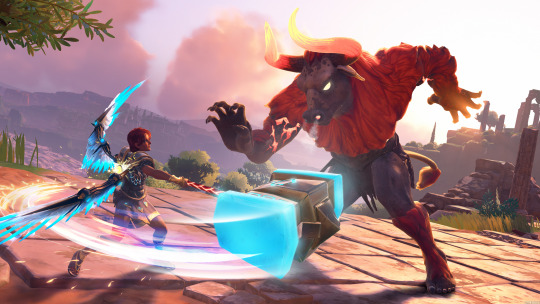
Man, something happened to me this December. I’m currently finding myself playing a lot of Forza Horizon 4, Destiny 2, and Immortals Fenyx Rising. None of these is My Kind of Game. Immortals is probably the least surprising of these, because it at least has swords and bows and stuff.
Still, I dismissed and mocked Immortals Fenyx Rising when it was first shown. It was called Gods & Monsters back then, and the idea of Ubisoft making yet another open world game, this time aping Breath of Wild was not appealing at all. I only ended up with the game after trading in Cyberpunk 2077 for Xbox credit and looking into Immortals because I was very surprised to see it on Game Informer’s game of the year list.
To get a few things out of the way, it absolutely recycles a lot from Breath of the Wild: you’ll be hang gliding, scaling walls as a stamina meter drains, finding shrines that contain puzzles and combat and climbing towers to get a vantage point and find points of interest on the map. The latter feels the most fumbled in this game - you can zoom in and survey the landscape, and your controller vibrates when you are looking near a point of interest. Move the cursor over it and press a button to reveal it on the map. They split the difference between Assassin’s Creed’s “all the icons pop in automatically” and Zelda’s wonderful “manually mark places that look interesting to you on your map” system and ended up with something neither functional nor interesting.
That’s where my complaints end though. The game’s art style is similar at a glance, but it’s vibrant and gorgeous, and never feels like Breath of the Wild. The combat is snappy, responsive, and challenging. The puzzle design is often creative, clever, and rarely frustrating; most of my frustration has come from my overthinking the puzzle solutions. There is plenty of gear to find, and the game’s cosmetic options are intuitive and welcome. The game’s narrative is better than I expected; it feels like a B-tier Disney movie. The writing has made me smile a few times, and made me roll my eyes a few times. Zeus as comic relief is a pretty major miss, but it’s fine apart from that. It helps that I’m already familiar with Greek mythology.
It’s a huge, beautiful world where traversal and combat feel great. It’s sometimes hard to get anything done because I am constantly distracted by tracking down an icon on the map, or just exploring because I saw something cool or strange. Not all of the puzzles and challenges work, but that’s okay because I can move onto something else. Immortals Fenyx Rising is this year’s Dragon Quest Builders 2: gaming comfort food where it feels good to sit back and check things off a list at the end of a long day. Still don’t like the name though. And fuck Ubisoft.
8. Atomicrops
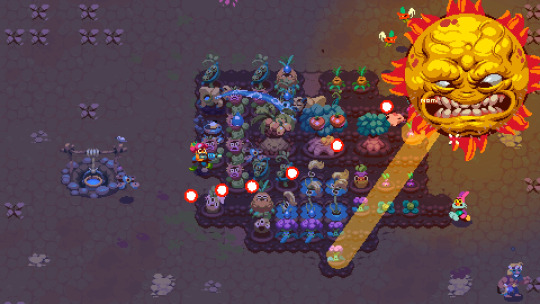
The first mention of Atomicrops I remember was “What if Stardew Valley was a twin stick shooter?” which is bullshit, because the games bear no resemblance beyond “there’s farming”. Beyond that first blurb, what appealed to me is the idea that the game’s days take place in 2 phases: during the daytime, you go out and fight baddies to gather seeds, and at night the baddies invade your farm and you fight them off while planting and watering crops.
It’s also a run-based roguelike, and I am 1 of 26 remaining people who is still psyched to play those. Give me a challenge, mix up the details, let me upgrade stuff between sessions, and turn me loose. The game has a good variety of weapons and the challenge is satisfying and rarely feels unfair (apart from the bullet hell problem of too much stuff on the screen at times). I don’t love the art style, but the music sure makes up for it.
7. Wintermoor Tactics Club
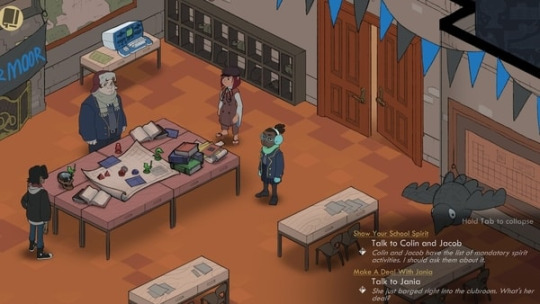
A game needs more than charm to be memorable and enjoyable. Charm can go a long way though, and Wintermoor Tactics club has it in spades. It takes place at a small college, and you play as a girl named Alicia. She and her friends are members of the school’s tactics club, and much of the game takes place around a table littered with graph paper, rulebooks, and snacks. As someone who loved tabletop RPG’s in simpler times, and never had the traditional college experience, a prettied-up version of that appeals to me in a huge way. It’s not wholly idyllic though, and it touches on issues of discrimination and what it’s like to be an outcast.
The gameplay itself is pretty straightforward tactics stuff and it works fine but isn’t really the draw here. I was propelled through the game largely by a desire to meet the next character, get the next story bit, and keep basking in the game’s wonderful aesthetic and smart writing. There’s something lovely about sitting around the table and playing a game with friends, and this game really captures that.
6. Ratropolis
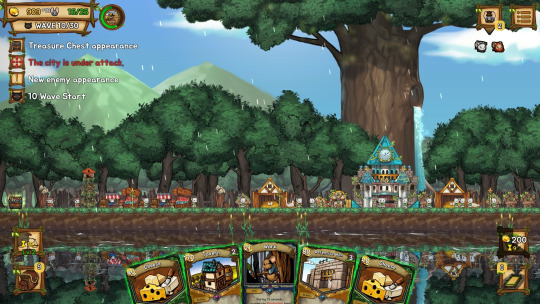
Ratrpolis is “A fusion of roguelite, tower defense, city-building, and deck-building!” which sounds like a hodgepodge of nonsense. And it kind of is. It’s a city building game where you are periodically being invaded from either the left or right side of the screen (or both). You choose from 6 leaders, each with their own pool of cards and play style, start with a basic deck of cards and slowly evolve it. The cards consist of buildings, military units, and various economic and military buffs. The major things that set this apart from favorites like Slay the Spire are that it happens in real time, and there is an economic aspect to manage. Tax money comes in every few seconds, and it’s possible to make poor decisions early on and not understand why you feel hamstrung later.
I spent a lot of games like that, not really understanding why I’d be doing okay and then get overwhelmed. I had a few rage quits early on, but I could tell that there was something there. I started approaching it with the mindset of building an economic engine in the early game, and I started having a lot more fun and success. Each of the 6 leaders feels distinct, and figuring them each out has been a lot of fun. Runs are usually no more than about 30 minutes, which feels about right.
5. Final Fantasy VII Remake
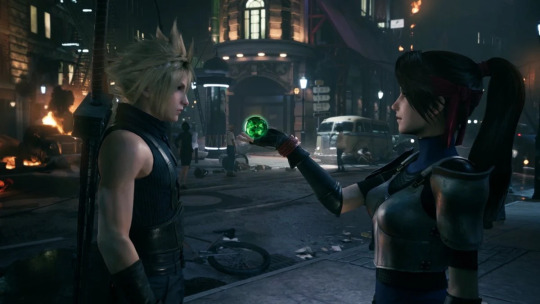
Despite identifying as a big JRPG fan, I’ve never enjoyed a mainline Final Fantasy game enough to finish it. This year I finished 2 of them: Final Fantasy XV and the Final Fantasy VII Remake.*** I played the original Playstation Final Fantasy VII release, I think I got through disc 1 and a little ways into disc 2. It didn’t resonate with me, so I came to this year’s remake with no reverence for the game. When many of the original game’s fans got upset with how much the remake changed the script from the source material, I didn’t have a horse in that race.
The remake is gorgeous, the combat and upgrade systems are engaging, and the story is interesting enough to keep me wanting to see what’s next. The 1997 release of the game had some stuff that isn’t going to play the same in 2020 like the scene where Cloud is crossdressing, the game’s themes of environmental activism, and, uh, the entire Don Corneo storyline come to mind. But the game handled all of this pretty well. I’m glad to say that this is one of the best RPG’s I played this year, and I look forward to the next entry whenever the hell it comes along. Cloud is still an unlikable punk though.
4. Monster Train
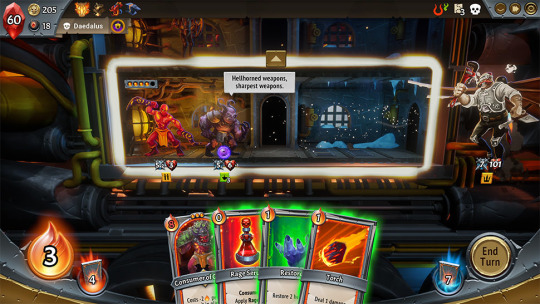
Slay the Spire was a surprise hit a couple of years ago, and inspired a lot of folks in the indie space to take a crack at the deckbuilding genre. Monster Train managed to to take inspirations from Slay the Spire but still feels like very much its own thing. Both games have you progressing through a series of encounters consisting of battles, shops, or small events trying to defeat the big bad at the end of a journey. You start with a deck of basic cards and upgrade them and add new cards along to way. You can’t really start a run planning on making a certain style of deck, you just choose from the cards available and watch the strategy form. The way this process tickles my brain makes these games endlessly replayable. The “one more run” is very strong here.
Monster Train differentiates itself in a couple of ways. First, where Slay the Spire was always just your one character battling one or more enemies, here you are summoning multiple creatures on the lower 3 levels of a 4-level train (I don’t know either). If the enemies reach the top floor of your train, they attack your core directly and eventually defeat you. This adds a strong spatial planning element - now you’re thinking about which combatants you want on each floor, and in what order.
The other notable difference between the games is that while Slay the Spire has four heroes, each with their own unique pool of cards, Monster Train has five factions. It’s one better. The first three factions feel pretty standard from a creativity point of view - red/green/blue are fire/nature/ice. The last two factions you unlock feel wholly unique though: there’s a faction that summons weak, cheap units and feeds on them for combat bonuses, and one that is made of candle beings who are powerful, but melt away. Okay, the real reason is that each time you play, you’re choosing a main faction (each has 2 champions to use from) and a secondary faction (you don’t get their champion, but you get access to their pool of cards). This makes each run feel unique and makes the game feel endlessly replayable. Even after unlocking all of the factions and their cards, and winning a run on the hardest challenge setting with each faction, I’m still playing Monster Train.
3. Spiritfarer

If Kentucky Route Zero is my “It’s Not You, It’s Me” game this year, Spiritfarer might be my “Love at First Sight” game of the year. The game’s striking visuals grabbed my attention immediately when I first saw the trailer at E3 2019, and it was billed as a game about saying goodbye. My only reservation was that it was coming from Thunder Lotus Games, whose previous titles (Jotun and Sundered) both fell flat for me.
Spiritfarer ended up being everything I was hoping for. You play as the newly-appointed ferryperson for the boat that transports souls from the land of the living to the land of the dead. Your ship acts as your base of operations, and you build living quarters, a kitchen, a forge, and lots of other facilities on it. The beings who join you on your ship are anthropomorphized animals, each with their own story. Your job is to help them be at peace, then send them to the next life once they’re ready.
In practical terms, you’re spending a lot of your time sailing from island to island to talk to people and find resources. There’s a plenty of crafting and time sinks in the game, and I appreciated the excuse to luxuriate in this game world. No game made me cry this year, but Spiritfarer (Alice’s story in particular) sure did try. It was the perfect respite for the nightmare that was 2020.
2. Yakuza: Like a Dragon
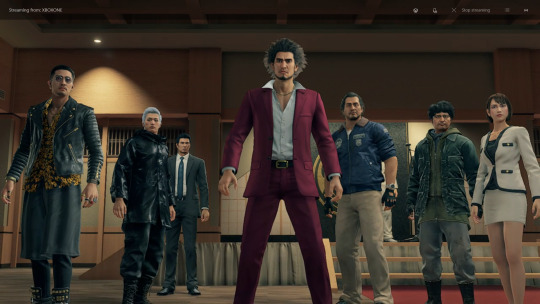
A lot of Yakuza fans were concerned over this game’s switch from the series’ usual brawling combat to turn-based RPG combat. I was not one of them. Everything about this game sounds like the sort of fan fiction someone like, well, like me would come up with on a late night drunken bender. “What if it was Yakuza, but like, JRPG battles? Why would that happen.....OH oh oh what if the main character was a big fan of DRAGON QUEST so he just, like, saw the world in those terms? You could have party members, and a Pokedex of all the weirdo scumbags you fight, and you could change jobs by going to a temp agency!”
All of that is in Yakuza: Like a Dragon. And I love it. The series’ producer says they decided to pivot to a turn-based combat system after positive reaction to an April Fools Day Yakuza RPG joke they put online. And there are some rough spots. Your party members get caught on the world’s geometry sometimes, and combatants are constantly milling around so AOE abilities feel like a crap shoot. The Yakuza series has always had about 30% too much combat, so translating it into a genre known for grindy gameplay feels like a perfect storm of sorts. Thankfully, I’m a fan of grindy RPG’s so all of this is directly in my wheelhouse.
This eighth game in the Yakuza series is the first with a new protagonist - goodbye Kiryu Kazuma, hello Ichiban Kasuga. Where Kiryu was very stoic, Ichiban is a hothead with the perfect mix of kindness, earnestness, and stupidity for a JRPG hero. He is an incredibly likeable and charismatic character, and I hope Ryu Go Gotoku Studio tightens up the battle system and keeps this iteration of the series running.
1. Hades

Hades seemed like a slam dunk. My favorite studio was making an action RPG based on Greek mythology. The announcement was the best possible version of “AND you can play it right now!” I bought it (in early access) immediately and played it a bit, but I didn’t want to burn out on it so I only briefly checked in on it every few months. As a result, my hype was pretty low when the game reached its 1.0 release.
Once I decided to fully engage with the game though, I was unable to put it down. SuperGiant’s games have the best writing, music, and voice acting in the business. That’s a pretty high bar to aim for, and they hit it once again with Hades. Both of their post-Bastion games (Transistor and Pyre) are games that I have to recommend with an asterisk though; the gameplay parts of each game is an acquired taste and will put some folks off.
Hades, however, I can give a full throated recommendation for. The gameplay is tight and the combat feels good. There’s a lot of variety in the weapons, so you can either find one that fits your style and stick with it, or do what I did and change it up every run. They also managed to achieve something incredible - they largely took the sting out of losing in a run-based game. There are things to unlock between runs as you’d expect from a roguelite. I found myself enjoying chatting with the denizens of hell as much as the moment to moment action gameplay. I’d respawn back home and make my rounds, taking to people and spending my cash. I had a route I’d travel each time, and that route ended with Skelly in the weapons room. Oh, the gauntlets grant a bonus if I use them this time....the door to start a new run is just right over there....okay I can do one more run tonight.
That personality and dialogue is sprinkled throughout the runs themselves too, in the form of the various Greek gods you talk to and get boons from. The variety in weapons and boons give the game tremendous replayability and give the game a deckbuilding feel. Every character in the game is incredibly well developed and well-acted. Zagreus is a likeable and relatable protagonist. He wants to get away from his disapproving father and find his estranged mother, and he and his father can’t see eye to eye.
The story and gameplay in Hades do equal lifting, the game is an incredibly complete package. The game also provided a couple of the most memorable moments of the year. Hades might just be SuperGiant’s best game. It’s certainly their most complete game.
*It’s very much on the lighter side of this gameplay style, akin to 2019′s Star Wars: Jedi Fallen Order. Plus there are difficulty settings, which I appreciate.
**Invisible Inc, Dragon’s Dogma, and The Outer Wilds come to mind.
***Final Fantasy VII Remake is only the first installment in a series
****Cloaked in shame and failure.
0 notes
Text
10 Feature To help Reinvent Your VIDEO GAME
Gaming With You At The Center
We've after again teamed up with our buddies at Dire Wolf Digital Studios to bring this remarkable game to your gaming table. The notion for Green Man Gaming came about when we were considering exactly where the games marketplace was going to go and what was going to take place next. There was a powerful company model in trading in games in the sector and there was the get started of the move to a totally digital marketplace. The coupling of these two market place mechanisms were supported by analysis from London Business School displaying that a customer's propensity to obtain is heightened when supplied the alternative to trade-in a solution or recoup some of its value. So the 'Å“big idea'Â was to combine digital and trade-in into the exact same platform, efficiently becoming a retailer and a marketplace on 1 global digital platform.
Cher Cabula finds that 24 hours in a day is not adequate to fuel her passions. With a entire lot of time management expertise that has been tried and tested for quite a few years now, when not designing exceptional interiors for quite happy clientele, the added time is devoted to blogging and gaming. A single look at Cher and you'll obtain that she's not your standard gamer chic. In fact, most gamer girls are. What sets her apart is that she does most items with poise and style. If you are searching for techniques to mix in games, style and art then Cher is your go-to girl.
Gaming on portable devices has really gained traction inside the last three-five years, and some clientele, such as Planet of Tanks Blitz, Pokemon Go and Fortnite, had been able to win significant market recognition. There is surely a future for mobile gaming, but, personally, I see numerous drawbacks also - no AAA titles ported on mobile devices, virtual touch screen-primarily based buttons do not give suitable feedback, and player expertise is heavily dependent on the capacity and delay in the cellular network. Moreover, new gaming capabilities, new game mechanics, advanced graphics, operating with the highest doable expertise and on any device - these are the expectations of the gaming audience.
Mobile games continues to grow in terms of players and revenues across regions. An increase in the number of paying gamers and time spent gaming is fueling the Western markets though increasing on the net connectivity, smartphone penetration and the availability of 3G and 4G connectivity drives fast development in emerging markets, such as Southeast Asia.
Beware The GAMING Scam
You can have your personal exceptional Gaming Web site and impress your on the internet players with this completely functional WordPress Theme for Online Games. Take a appear to our cool features list beneath and you'll see that the Gameleon theme will be a good option to your projects and will convince you to get it in a minute! Also, if you are not hunting to establish gaming internet site, that is fine also. Given that latest update this theme features none-gamer edition with equivalent functionality but noticeably different design.
Manufacturers across the globe have been coming up with gaming devices beyond just the mice, joysticks and keyboards for years. Some are constructed for durability, other individuals for added functionality http://freememberships4all.com/ and an enhanced gaming experience. Most of them are futuristic and sleek but all of them are for built for 1 objective, to give the finest darn gaming session hardcore gamers deserve.
When connectivity is constantly enhancing, the idea of cloud gaming is not exactly new. It can be traced at least as far back as 2000 and G-cluster - a service that supplied on-demand gaming by way of set-major boxes. A wide variety of cloud gaming projects have come and gone given that then, notably OnLive and Gaikai, which was acquired by Sony in 2012 to type the basis of PlayStation Now - Sony's subscription service that lets players stream older titles on their console or Computer.
Playing a game in your pc or even game console demands absolute concentration and focus. If you can not manage your cognitive skills, you might not be capable to mentally formulate a much more viable strategy for a provided issue in your game play. That's why serious gamers generally take the Stimpack Energy & Concentrate gaming supplement. It includes Vitamin B12 that enhances the neural connections of the brain, assisting you to concentrate a lot superior. It also includes caffeine for a substantially-required power enhance as nicely as extra focus and alertness. The Stimpack also consists of theobromone and l-theanine, each of which are established cognitive stimulants.
youtube

Why Gaming Conversations is a Top rated Video Game Resource: RPG fans will really like Braxwolf's in-depth analyses of preferred new and classic games, as he usually reaches into his back catalogue to overview and go over classics that have been about for awhile. He specifically tackles MMORPG's on a regular basis, so multiplayer fanatics will find a lot to like right here.
The journey does not end when the solution arrives at your doorstep. We want to make a community to come back to, and go over your adventures on the internet! That's why we'd love to retain interacting with you on any of our social media, blogs and our future forum. Links can be discovered at the bottom of this article. Fundamentally, we want to show shoppers that they imply extra than just somebody who buys from us, we want to greet them into our household. The heart of gaming lies in its community.
SHIELD transportable has been designed with the philosophy that gaming really should be each open and versatile. As an Android gaming device, it supplies access to Android games by means of Google Play, with SHIELD- and Tegra-optimized titles located via SHIELD Hub application. And as a wireless receiver and controller, it can stream games from any Kepler or Maxwell-primarily based Computer powered by a GTX 650 or higher GPU, accessing excellent titles from your STEAM, Origin, and Uplay libraries.
If you were born in the late 70s, chances are you've played 1 of the most iconic gaming console systems in the period. In truth, the Nintendo Entertainment Program (NES) Classic Edition has paved the way to how households can take pleasure in a fantastic laptop or computer game with each other. Now, you can bring back those old glory days and re-play your favourite NES games of the 80s and 90s such as the Super Mario Bros., The Legend of Zelda, Donkey kong, Mega Man, Pac-Man, Final Fantasy and a entire lot additional. The modern day version of the NES Classic is additional streamlined and comes with HDMI connectivity.
One particular of the very first phones getting this function was the Sony Xperia Z5 Premium. Its battery went low two times quicker when a 4K video was operating. To support this technology, a mobile device needs higher processing energy otherwise there may possibly be uneven screen backlighting due to its inability to deal with millions of pixels at a time. In addition, mobile phones powered by 4K technologies have not develop into popular however mobile gaming development does not involve this function on their roadmap. Basic as that.
Our VA pick is truly a bit unique considering the fact that it is an Ultrawide, curved 35†Acer Predator Z35. While it isn't the very best for competitive gaming (most on the internet games don't let you to use the full width of the screen due to the fact it is a competitive advantage) it'd be a terrific pick for any individual that enjoys single-player gaming, or watching motion pictures.
Whether you want to develop a little-scale group web page and spread data about your players or handle substantial-scale organizations like Group liquid or Virtus Pro with numerous gaming divisions, PixieHuge is best for you. PixieHuge delivers you with sections with designated purposes such as player profiles,, sponsor promotions, different game departments, match history and achievements list.
0 notes
Text
Star Fox 2 - A New Hope
Star Fox, Star Wing, Lylat Wars, whatever you know it by has always had a weird relationship with publisher Nintendo, being a flight combat game with a cast of cute furry woodland creatures taking the fight to monkey emperor Andross in 1994, developers Argonaut impressed many with it’s groundbreaking polygon graphics on Snes provided by the SuperFX chip, built into the cartridge the chip basically treated the Snes as a pass-through device allowing it to render visuals which may have been impossible on the original hardware, although this early implementation of 3D graphics would come at the cost of basic looks, terrible draw distance and an inconstant frame-rates, although the emulation scene and even modders had success to overclock these chips many years later leading to better performance.
Argonaut continued working on it’s hardware leading to the SuperFX2 chip alongside Star Fox 2 designed to showcase new abilities of the chip, although that honor would end up going to Doom and Yoshi’s Island as Nintendo and Shigeru Miyamoto wanted to a clean break between 3D graphics on games consoles and worried about comparisons to 3D games on more powerful systems at the time like the PlayStation or Sega Saturn. Star Fox 2 aimed in to bring a whole host of new ideas such as all terrain mode, new pilots Fay the dog and Miyu the lynx, rivals the Star Wolf team, walker mode for Arwings, multiplayer modes and a single player with multiple endings, these ideas would later be re-used in later Star Fox titles. Nintendo EAD would take up development on the next Star Fox on Nintendo’s upcoming N64 resulting in a retelling of the original but with impressive smooth 3D graphics, all terrain battle mode, fully voiced cast, multiplayer modes, new vehicles like tanks and submarines, most importantly though pay have been rumble support. The game being bundled with the Rumble Pak it would help make a gimmick into an industry standard with Sony and Sega releasing there own versions.
Easily becoming an N64 classic it would appear Nintendo somehow managed to miss what made Star Fox 64 as loved as it was with the next entry in the series being a Star Fox skinned GameCube remake of unfinished Rare Ware N64 game Dinosaur Planet. Rare’s effort with the IP would be closely compared closely to The Legend Of Zelda - Ocarina Of Time and garner positive reviews, this entry would also introduce new pilot, Kat. Q-Games, who had been founded by original Star Fox programmer Dylan Cuthbert would develop Star Fox Command for the NDS, being a combination of strategy and flight combat, including multiple endings and horrid stylus controls that would drag down what may have been an interesting concept, Command would gain mixed reviews. The last Gamecube entry would be Namco’s attempt with Star Fox Assault, a sequel set after SF64 which returned to flight combat on rails and managed to include horrible third person on foot sections and level designs which just didn’t manage to meet the same standards of SF64.
After mixed reactions to these games in 2011, Q-Games alongside EAD would both return to the Star Fox series remake Star Fox 64 as Star Fox 64 3D for the 3DS, including new visuals, re-recorded dialog, gyro controls and 2 modes that catered to a more classical experience or a new mode balanced towards the gyro controls and 3d effect. The remake reviewed well despite lack of online play and lack of the original rumble feedback SF64 had but reminded people why Star Fox 64 was a solid fun game. The success of this remake would lead to the development of 2 new Star Fox games on the Wii U, Star Fox Zero and Star Fox Guard. Star Fox Zero would be another reboot of the series, with Miyamoto stating he wanted the presentation to be structured episodically, drawing inspiration from television series Thunderbirds, featuring classic and experimental levels and ideas. Despite having this entry co-developed with Platinum Games the game would be reviewed negatively due to a reliance on using the Wii U Gamepad gyro controls and having to switch between the Gamepad screen and TV to see some targets. While I personlly found Star Fox Zero to be a good entry a lot of public outcry seemed to focus on the issues the game had as major ones and tower defense pack in Star Fox Guard was mainly viewed as being a low budget extra.
By this point it would be hard to not assume that Nintendo may have been ready to give the Star Fox series a rest in a similar fashion to F-Zero after new IP like Splatoon have managed to connect more with an audience based on its artistic direction and strong online community, it comes as shock when the biggest surprise from the Snes Mini Classic announcement is that Star Fox 2 will come included in this unit alongside the Snes original, assuming that Nintendo and Argonaut have finally overcome rumored legal issues over patent of the Super-FX chip in regard to emulating it, which is what may have prevented the original Star Fox and Yoshi’s Island releasing on the Virtual Console. Cuthbert has stated in an interview Nintendo Life conducted in 2015 that Nintendo had given access him to a finished ROM of Star Fox 2 which had been reviewed and debugged by Mario Club and that this build contained many elements not seen in a leaked earlier prototype which many fans maybe familiar with. Many will argue in this age of digital gaming where the idea of being able to release old games, prototypes or even un-translated games shouldn’t be an issue with only minimal work needing to be done to make it a commercial product available to fans, as seen by Nintendo releasing a NES translation prototype of Mother on Wii U as Earthbound Beginnings or like Sega with Monster World IV bringing it with a new translation after 18 years to Virtual Console, Xbox Live Arcade and PlayStation Network.
With NOA actually saying with the Switch that they had been trying to listen to customers more and actually read comments on popular sites like Neo-Gaf it actually seems like they may actually mean it and not using it as a PR piece. With the announcement of 2 new Metroid games, going region free with the switch, cross-play between Xbone and PC gamers, a Netflix style subscription based service of its back catalog with added online play, it is actually starting to feel like some of the impossible dreams could happen, Mother 3 which has been an outcry for its release in English ever since it’s 2006 release on Game Boy Advance, could we finally see that happen now with the eShop and the Switch? or if more outrageous ideas like Marvelous, For The Bell The Frog Tolls, Fatal Frame 2 or 4 or maybe even Captain Rainbow? While I won’t be placing any bets on any of those games coming out anytime soon or at all the announcement of Star Fox 2 actually being released officially by Nintendo still feels like part of a crazy dream and makes me wonder if bigger or better surprises are in store? With the subscription service Nintendo has planned lacking in solid details right now I can only ponder at the potential this service may hold.
3 notes
·
View notes
Text
King of the traditional consoles-- what to place on your wishlist|VentureBeat
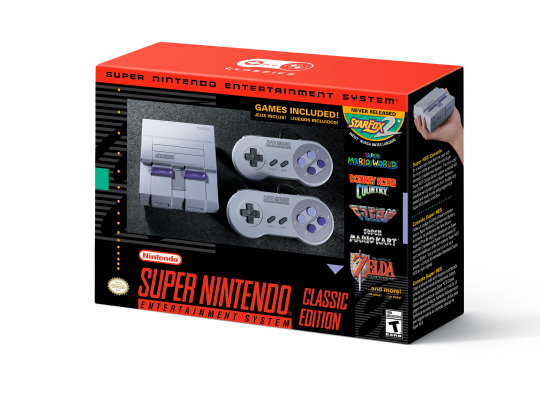
When it concerns bring in the video gaming public, prominent console manufacturers are seeking to fond memories as much as they are to online services and fancy peripherals. Simply in the last few years, Nintendo, Sega, Sony, SNK, and others have tossed basic circuitry into an adorable plastic shell to make players recollect-- and open their wallets.
As one of those individuals who yearns for the days of bits and beat-'em-ups, I have a nearly unhealthy fascination with the retro revival and all the items that have come with it. The thing is, just a few of these devices live up to their forefathers. A few of them, rather frankly, may offer you the desire to let the past die. Which ones are worth the cash?
Prior to I go into this ranking, it is essential to mention that none of these traditional consoles have a comprehensive list of video games. Don't go in anticipating to play everything that you keep in mind.
Above: The Sega Genesis Classics collection deserves your time.Image Credit: Sega If you truly desire to have a look at a specific video game, your finest bet would be to see if it has a PlayStation Network, Xbox Live, or Nintendo Virtual Console/eShop release. A number of business, including Sega and SNK, have launched collections that feature many old-school titles. The Sega Genesis Classics collection(available on PlayStation 4, Xbox One, and Nintendo Switch) is a great example. One more thing, the only minis I'm going to discuss are ones in my individual collection, so let's
get to it. The kings of the classics SNES Classic( Nintendo )The Nintendo "Classics"may not have pioneered the mini-console trend, however they turned it into a full-blown phenomenon. When the Japanese video gaming giant decided to come out with miniaturized homages to their Nintendo and Super Nintendo Home Entertainment Systems, the world took notice. And it stood in line with money at the ready. Now, almost every video gaming connoisseur has a Classic, or they're trying to find one. Both the NES and SNES Classics are extremely similar. They include a compact kind element, adoringly recreated controllers, user-friendly user interfaces, and great
video output. Games look fantastic and play without much input lag( this will differ, depending upon the television). You can likewise apply filters to get that tube-TV aesthetic-- if you're into that. Conserve states for every game are readily available. Above: The SNES Classic takes you back to the early '90s. Image Credit: Nintendo What really makes these models shine is the video game choice. And, for me, that's why the SNES Classic is
king. While it provides fewer titles than its NES big sibling, the library here is unbelievable. Super Mario World, F-Zero, Contra III: The Alien Wars, Super Metroid, Final Fantasy III(VI ), The Legend of Zelda: A Link to the Past, and Street Fighter II Turbo are just a few of the highlights. As an included perk, Nintendo went ahead and consisted of Starfox 2, which never saw an official release until the SNES Classic struck shop racks. These 16-bit experiences hold up better than numerous other older video games. Just consider all the pixel-art indie titles out there. Where do you think they discovered their motivation? 2. NES Classic (Nintendo )Truly, the NES Classic is worthy of to be at the leading just as much as its SNES equivalent.
While the SNES edition provides deeper gameplay and more technically remarkable titles, the NES Classic is packed with renowned releases that introduced a new dawn for gaming. The initial
3 Super Mario titles, the
first 2 Legend of Zelda games, Castlevania, Kirby's Adventure, Ninja Gaiden, Punch-Out, and Mega Male 2 are some of the favorites that made the cut here. Above: The NES Classic is a mini marvel.Image Credit: Nintendo The NES Classic includes the same first-class develop quality and features as the SNES version. The one big distinction here is that it features one controller, not 2. If you wish to have fun with someone else, nevertheless, you'll require to pursue an extra gamepad-- which can be just as difficult to
discover as the console itself.
This does make the core package a
little less expensive, and you can utilize an SNES Classic controller if you occur to have one lying around. Enjoyable but problematic 3. Neo Geo Mini (SNK)When I heard that SNK was making a mini-Neo Geo to commemorate the console-arcade hybrid's 40th anniversary, I rushed to the very first preorder page I could discover. The end product itself may be the coolest device on this whole list, however it might just be the most infuriating. The Neo Geo Mini has an extensive video game list that need to satisfy most fans of
the original hardware
. SNK at first released two minis: one for Japan, and an "International "variation for other areas. Many of the games overlap between the two, however each mini has its own special offerings. Personally, I discovered this aggravating due to the fact that certain video games that I wanted ended up just on the Japanese system.
Regardless, amongst the Neo Geo Mini's 40 games, you'll get to play a slew of Metal Slug and King of Fighters titles, the remarkable Garou: Mark of the Wolves, Shock Troopers, Blazing Star, and the criminally neglected Last Blade 2. The Neo Geo library (and, as a result, the Neo Geo Mini's selection)has a heavy focus on fighting games. If you're not into that genre, you ought to most likely move on to something else. The
Neo Geo Mini gadget is different than most tribute consoles because it has its own LCD screen and arcade-style controls. This makes it a rather striking addition to any gamer's collection. While it's enjoyable to play these video games on a tiny game cabinet, the novelty wears away rapidly. And it deserves noting that the stick has no gate or microswitches, so you're generally playing with analog-style controls. This is less than perfect for the exact, arcade nature of
Neo Geo video games. The system is perfectly playable, however, and the screen's quality is surprisingly great. But I 'd rather hook the console as much as a TELEVISION, where I can have a more comfortable gameplay session. And that's where the Neo Geo Mini truly fails. The video output is flat-out disappointing. I can only tolerate playing with the "image quality optimization"filter made it possible for, which offers the video an extremely smoothed out appearance. I truly do not like the way it looks, however it's even worse when I turn it off. I paid for one of the gamepads that SNK released in combination with the Neo Geo Mini, so I might get the many of my TV play. These look nearly similar to the Neo Geo CD
pads that came out in the '90s. But the brand-new controllers don't include the satisfying microswitches from the CD system D-pads. To be blunt, the Neo Geo Mini controller is a disappointment. The D-pad feels unclear, and it's an ever-present distraction when I'm playing. And for some factor, SNK changed the order
of the buttons, so that adds an unneeded layer to my irritation. Due to the fact that it has its own screen, the Neo Geo Mini is in fact a little more costly than its classic colleagues. And you'll have to invest more money if you want one of the gamepads. Overall, the Neo Geo Mini is an excellent concept with an equally great lineup of titles. SNK screwed up in the execution, nevertheless, and it stopped working to provide fans with the worth they deserve. Still, this little thing has plenty of style(simply like its library ), and if you have actually constantly desired a Neo Geo,
possibly it's worth a shot. 4. Super Retro-Cade (Retro-Bit)This is the quirkiest console on the list, thanks to its random, yet unmistakably charming, selection of titles. Retro-Bit launched this gadget as a follow-up to its Generations plug-and-play mini-console. The Retro-Cade has a somewhat spartan style and includes two basic, yet strong, controllers(although, I wish the buttons and
D-pad were less stiff ). Like I pointed out earlier, the library of titles here is all over the place. You'll find game brawlers like Double Dragon from Technos and Capcom's great
Armored Warriors. You can jump into vertical shooters like 1942 and Varth. Or horizontal shooters like the goofy game romp Boogie Wings and R-Type III for the SNES. If you want puzzle video games, you can inspect out multiple Magical Drop games. Oh, and even the odd, Castlevania-like Holy Scuba Diver for the NES is here. Above: Yeah, Mega Male 3 is on the Retro-Cade. Image Credit: Capcom I ought to likewise mention that Bionic
Task force(arcade and NES), Strider(game and NES ), Joe and Mac, BurgerTime(NES ), and numerous entries in the Final Battle franchise are on this thing. The Retro-Cade's interface is straightforward yet functional. You can adjust the video settings to show a stretched or original aspect ratio, however the video games themselves look a bit too soft, with muted colors. Apparently, an upgraded version of the console is now readily available that lets you disable the smoothness filter, leading to a crisper image.
The"version 1.1"Retro-Cade also includes a revised
game list that includes
titles like Unrefined Buster. However I've only had the chance to experience the original gadget. Also, when utilizing the Retro-Cade, I needed to put my TV into video game mode to get less input lag. This is the norm for
many contemporary tvs when using video gaming gadgets, however with a few of the other consoles(like the Nintendo Classics), it wasn't as big of a requirement.
0 notes
Text
10 Franchises SEGA Would Be Crazy Not To Bring To VR – Part 1
Welcome to another edition of VR vs. The weekly VRFocus column where the ‘other one’ from the site talks about most anything and everything to do with virtual reality (VR), augmented reality (AR), mixed reality (MR) or some crazed combination of the three. Today we’re continuing a thread begun last week in the final part of my three-week feature into what may lie ahead in 2017. There I mooted the idea that of all the studios currently involved within VR, certainly from a gaming perspective there is one that is conspicuous by its absence. SEGA. Yes, yes, I know there are Hatsune Miku games but as I pointed out at the time Hatsune Miku and the vocaloid bunch ultimately aren’t SEGA property and aren’t a traditional franchise. They aren’t one recognised within their All-Stars series for instance – and whilst that isn’t a qualifying marker for this list considering how big the Project Diva series is and how iconic a figure Miku is in Japanese culture certainly, you’d’ve thought SEGA would make more of a deal out of things than they have were she theirs. So on that basis, scrub those out PSVR games off your mental tally.
Updated total? Zero.
This is unusual for SEGA. Historically SEGA (at least in the third-party era) have rushed in to support whatever new technology comes along. Do you by any chance remember the EyeToy, Sony’s camera accessory for the PlayStation 2? Yes? No? There weren’t exactly a whole heap of games for it. But SEGA were there with the original SEGA Superstars to fly the flag. They supported the Kinect they fell into bed with Wii U pretty quickly, etc, etc. For SEGA to not have had one of its more noted franchises in the West ready to rock and roll when VR came to retail, certainly the PSVR, was pretty unusual. (Again, discounting the leek-swinging singer lady.)
But that’s not to say there aren’t plenty of opportunities for SEGA to embrace VR and thrown a bone to its more beloved franchises. It’s one of the sad truths about SEGA that their most iconic of series, with the exception of the fast spiky one, have never exactly been humongous successes financially. Still, why not use some of them and maybe give them a new lease of life outside of a new racing game? (No, really SEGA. It’s time for Transformed 2. Throw some money at SUMO Digital, will ya?) It’s also not like we don’t know SEGA aren’t messing around with VR either. Both SEGA Europe (SOE) and SEGA America (SOA) revealed their ownership of VR kits (HTC Vive and PlayStation VR for SOE and Hololens for SOA) thanks to community videos. Way to keep that secret chaps. A+ work.
So let’s get things underway. As before I must point out that I used to work for SEGA for several years and worked on a number of the franchises listed that I’ll be bringing up. It was some time ago now, but I’m reliably informed that if I don’t do that the world will apparently end. We begin first with an honourable mention.
Honourable Mention: Alien Isolation
It’s just not going to happen folks. Many have said the masterfully creepy atmosphere of “SEGA’s Good Alien Game” – tho everyone forgets they also did an Alien game on the DS in that discussion – was a perfect match for a full and proper adaption into a VR experience. The scare factor would be immense, obviously. As it’s bad enough being stalked by a Xenomorph without actually looking down at your chest as its tail pushes through it to kill you. As much as we’d all like it to, the economic factors involved just mean Alien Isolation is a non-starter for Creative Assembly to even get involved in really. Boo-urns.
However, speaking of Creative Assembly…
Total War
It’s one of gaming’s little quirks that one of console gaming’s most well known names is the publisher that is in actuality one of PC Gaming’s powerhouses. Between Sports Interactive’s Football Manager series and Creative Assembly’s Total War franchise SEGA have an commanding grip of the PC chart, one would go far to say dominance at some points in the year. If you have lived in a hole for the past couple of decades, Total War is a series of real-time strategy games that takes keen players take on the role of General in various eras of time. Replaying notable battles and playing tactical hardball with history. Whether it’s the Medieval period, the time of Rome, the rise of Napoleon or the era of the samurai there’s plenty to do. Heck, you can even throw history right out the window now and enjoy some Warhammer in your Total War.
Total War has always been about getting stuck in to battles. The planning, the preparation, the implementation and the execution. The buck stops with you, and as the series has developed the control system has allowed you to get ever deeper into the action. You can even follow individual soldiers. It’s such a well developed system that there’s even been a BBC game show (essentially) based on playing the series. One that’s recently had something of a comeback.
youtube
So with this in mind how would VR make Total War better? Control.
Now, considering what I’ve just written you might be wondering what I’ve been talking about since I’ve just been praising the system. But you can always improve and everyone and anyone who has played Total War has always had periods where the game just won’t place units right or you can’t get the camera in jussssst the right position. Now imagine you are in the map as opposed to looking at a 2D surface. Imagine you were, with your motion controllers able to to manipulate your units and your surroundings just so. How much easier and dynamic and engaging an experience that would bee if you brought a touch of Minority Report to proceedings.
Heck, can you imagine a Hololens version of Total War? With you waging battles from your sofa over your coffee table, and manoeuvring your archers onto the high ground of the TV unit? That’d be amazing.
Samba de Amigo
Break out the Bellini boys and girls!
When I first saw the HTC Vive controllers my first thought, partly because of how they were being held and moved at the time, was that they kind of looked like maracas. And there’s only one game that invites you, without a hint of suggestiveness, to get your maracas out. Samba de Amigo first burst onto the scene on SEGA’s much loved Dreamcast and was actually developed by Sonic Team if you didn’t realise it. It also came out as an arcade experience before next surfacing on the Nintendo Wii. The game plays with you in amongst a vibrantly coloured carnival, armed with your maracas you control Amigo, one of SEGA’s two monkey mascots (the other being Super Monkey Ball‘s AiAi, strangely the two have never been seen as rivals in the Superstars/All-Stars titles. Which has always puzzled me.) You move and dance along to a selection of upbeat tracks, shaking your controllers in time to the beat and occasionally having to strike a pose. It’s a simple enough title, and well and truly puts the party into party game.
VR needs more games like that I think. More games that are just full on fun and colours. It’s why Balloon Chair Death Match got people excited, it was a simple premise and it looked fun. Job Simulator is the same. Bright colours and poitively oozes fun. Yes, we can all enjoy a nice serious game with high stakes, but in dammit we all just want to be silly sometimes. Samba allows you to do exactly that. Now, what I’m essentially asking you is to imagine this in VR. Please watch the video below as in this instance it is important to what I’m writing about.
A warning before you do however; if you are wearing headphones please turn them down. There’s some loud audio distortion on the video from the outset.
youtube
Just look at this man. Look how bloody happy he is. He doesn’t care he’s in the middle of an arcade, he doesn’t care he has a crowd. He’s just going for it: a master at work. Nevermind your beloved Salt Bae (a reference I realise will date this article terribly), in your heart of hearts you wish that were you. You wish you were as cool as the Samba Bae.
Now I’m waving any potential wire-based issues here. Forget ’em. Let’s lay it out. You put on the headset and you step into a party; a “Carnaval de VR”. Everyone around you is interacting with you. The movement is infectious. You are the centre of a mass celebration with bouncing creatures and an equally bouncing musical beat. You have motion tracking controls. You wave them about in time to the music. It’s escapement, elation, exercise and fun. Now we bring things up to date with the new technology and throw in a dash of evolution to the game as well. Unlike before you can use the sensors or PlayStation camera to fully track your movements. All of a sudden Samba can have a touch of Dance Central in it, evolving it into a bit more of a full body game with one stroke. You have greater accuracy than ever before on the controllers, the game can actually see you for the first time and you get one of the most smile inducing experiences on VR. As an added bonus it gets to be a game franchise fully realised on VR, something people are clamoring for.
Yo SEGA. You’ve got my number. Call my people (me) and let’s make this happen. I’m totally open to being Producer on this thing. SAMBA! Du du de-du du-du du de-du…
Condemned
There’s a very good chance you don’t remember Condemned: Criminal Origins. There’s an even better chance you’ve never played it or Condemned 2: Bloodshot. Which is a pity really. Condemned is a first-person experience which puts you in the shoes of Ethan Thomas, a police officer investigating a murder which slowly takes him down a path to discovering secret societies, mysterious entities, encountering nightmarish visions and the city falling into the grip of madness. Both games are a twisted mix of dark menacing settings, genuine scares that mess with play on psychology and improvised combat usually involving whatever Ethan can get his hands on. It’s frantic, up in-your-face stuff and perfect for VR with the combat emphasis on melee.
youtube
It’s not just that though. The first Condemned game especially has you dealing, within your role as a police investigator, a number of different crime scenes. These are technical, and involve you hunting for clues, such as finger prints and making deductions. What Condemned is, is what I suggested it could be back at E3 2016. It could be the Batman VR game you’ve always wanted but combined with all the best twisted bits of Resident Evil VII.
We’ll just ignore the bit about shouting people to death from number 2. (Check out my good friend John’s Let’s Play of Condemned 2 to see what I mean.)
That’s all for this week. On next week’s selection of titles we’re embracing freedom in a couple of ways and I use the term “wave shooter”. Which will probably annoy people. Until then…
from VRFocus http://ift.tt/2jsNXtJ
1 note
·
View note
Text
Congratulations Gamers, Your Childhood Nostalgia is Now a Commodity
Welcome to the nostalgia loop; a hellish, real-life version of GameMasterAnthony’s birthday party where we celebrate things solely because we remember them. Like Steven Spielberg’s adaptation of Ready Player One, the last two years have revived every imaginable piece of classic gaming hardware and shoe-horned them back into the present. Whether or not we want to experience those original PlayStation games without the DualShock controller doesn’t matter– they’re here and people are going to buy them.
Video game manufacturers have learned from Don Draper that nostalgia isn’t the wheel, it’s the carousel. The end result of this is a market filled to the brim with aged nostalgic novelties, a treasure trove of small boxes to fit under your television and relive any part of the past. Your past experiences are no longer cherished memories: they’re commodities, and they’ll be sold to the highest bidder.
It’s not just the PlayStation Classic, either. The whole gang is here: NES Classic, SNES Classic, C64 Mini, SEGA Genesis Flashback, Atari Flashback, NEOGEO Mini, Mega Drive Mini, and more. Of course, that laundry list doesn’t include the Atari VCS (Atari’s latest attempt to rebrand itself) nor does it include the Intellivision Amico, Tommy Tallarico’s attempt to bring the Intellivision brand back into the console market. By all accounts, the creators of these nostalgic set-pieces have looked into the future by channeling the past.
In a sense, it feels that every attempt to bring classic games back into the cultural marketplace is some bizarre, masochistic penance for the way that older games were treated in the late 1990s and early 2000s. After all: as soon as the N64 and PlayStation were able to bring three-dimensional games into consumer’s homes, the combined critical and cultural milieu of the era soured on the previous generation of pixel-art, two-dimensional games.
While allegations that Sony Computer Entertainment America (SCEA) had a secret anti-2D bias are often overwrought and exaggerated, it’s no secret that there was a quiet consensus that 2D games were seen a vestigial part of the entire video game medium. According to some twenty-one-year-old reporting from IGN, SCEA originally refused to release Mega Man X4 on the PlayStation, with rumors speculating that SCEA disliked the game’s 2D nature. These assertions are echoed in a fourteen-year-old interview with Spong when (then) SNK Director Yoshihito Koyama stated, “Sony just isn’t interested in 2D games anymore – whatever it might be…and yet many games, as long as they are in 3D, trickle through all the time.”
Of course, monolithic publishers like Sony and Nintendo weren’t the only ones to view two-dimensional games like soon-to-be-forgotten relics. Gamers themselves and those in the critical sphere often talked about classic-style, 2D games like they were some holdover from a forgotten era. When reviewing 1997’s Mischief Makers, the first 2D release on the Nintendo 64, IGN’s Matt Casamassina wrote, “2D fans find a lot to like, but most people will want to rent this game only,” and, “The 2D graphics are fast and colorful, but look dated most of the time.” In fact, Casamassina uses the term “2D” eight times in his less-than six-hundred-word review and also stops to call the Nintendo 64 “king of 3D game machines.” While Casamassina (rightfully) never knocks Mischief Makers for being 2D, he still writes about the game like it’s a something of an oddity, the same way that a modern critic might write about a silent movie.
“Those in the critical sphere often talked about classic-style, 2D games like they were some holdover from a forgotten era.”
That being said, not every critic was as diplomatic as Casamassina. While Casamassina’s review of Mischief Makers was able to parse through the game’s art style, other reviewers found less to enjoy about classic, 2D graphics. IGN’s review of 1998’s Skullmonkeys (written by Adam Douglas) claims that developers making games in 2D were simply “lazy,” writing:
“Now it’s the late ’90s (man, time goes fast) and we’re squarely ensconced in 3D games. Yeah, I know there are some of you out there who just love 2D games. ‘Eh, 2D games are better because they focus on gameplay, eh, whine, whine.’ Whatever. My whole deal is if a game is going to be lazy and be 2D, it better have some pretty damn amazing gameplay.”
Later on, in the review, Douglas ponders whether or not Skullmonkeys has “brilliantly amazing gameplay that makes up for the fact that it’s 2D” coming to the succinct conclusion, “no.”
In hindsight, the critical impulse to look down upon 2D games in the late 1990s was simultaneously understandable and puzzling. On one hand, a brief glimpse at the freedom and wonder of Super Mario 64 could convince anyone that 3D gaming was the future. Considering the sheer stopping power of Super Mario 64’s presentation and gameplay, it’s entirely understandable that people played that game in 1996 and thought it was the apogee of gaming—a lodestar that would guide all 2D games into a new, polygonal promised land.
However, at the same time, how were folks able to see look at the graphics of Yoshi’s Island on the Super Nintendo and Goldeneye 007 on Nintendo 64 and prefer the latter? It’s important to remember that these art styles coexisted—3D gaming is older than the PlayStation, which was only released a few months after Earthbound came out for the Super Nintendo (in North America). While it’s easy to get pulled into the hype and momentum of emerging technologies, I didn’t go to see Avatar in 2009 and immediately condemn 2D movies. In fact, I walked away from that experience thinking that 3D movies were kind of annoying to watch.
“How were folks able to see look at the graphics of Yoshi’s Island on the Super Nintendo and Goldeneye 007 on Nintendo 64 and prefer the latter?”
The keyword in all of this is hindsight— while I wouldn’t dare criticize Casamassina or Douglas from the comfort of 2018, that doesn’t take away from the fact that the early 3D visuals from a lot of N64 and PlayStation games simply haven’t aged well. Of course, this doesn’t really matter: the nostalgia wheel will keep turning and eventually (if not already) consumers will have a soft spot for low-resolution textures, blocky polygons, and MIDI soundtracks. Contemporary pixel-art adventures with vintage sensibilities will soon be joined by indie spiritual successors to the era of the N64, PlayStation, and Dreamcast.
Through this, a pressing question remains: if consumers truly love all of these “classics,” why did gaming try to exorcize its two-dimensional past as soon as hardware advancements brought 3D gaming to market? Why did critics, publishers, and gamers alike turn their backs on classic games only to romanticize them years later? Gaming, as a medium, has a literal love/hate relationship with its past, as old games are either scoffed at for their inadequacies or romanticized when commodified. It’s a terrific balancing act; developers and publishers are constantly channeling the nostalgia of yesteryear while simultaneously pushing the needle forward.
If anything, the launch of the PlayStation Classic should teach us that commodification is not the same as preservation. Fraught with integral emulation errors, an easily accessible debug menu, and a genuinely strange collection of games, the PlayStation Classic makes no attempt to actually, you know, preserve the classics.
Every day we move further down the nostalgia loop, closer to being nostalgic about things that were initially created to palliate someone else’s nostalgia. While gaming still has to figure out its looming preservation problem, the solution probably isn’t a slew of different set-top novelties.
The post Congratulations Gamers, Your Childhood Nostalgia is Now a Commodity by Travis Verbil appeared first on DualShockers.
Congratulations Gamers, Your Childhood Nostalgia is Now a Commodity published first on https://timloewe.tumblr.com/
0 notes
Text
Here’s a look at the PlayStation Classic next to its 1994 inspiration
Sony announced the PlayStation Classic early this morning. Given the success of the NES and SNES Classic Editions, a micro console for the first PlayStation is a smart decision that will give Sony a way to make big profits off of its older library. Plug-and-play machines are a growing business, with sales of micro consoles increasing 400 percent year-over-over in 2018, according to The NPD Group. See how the PlayStation Classic measures up to the original PlayStation The mini PS1 makes a cameo at Tokyo Game Show
The PlayStation Classic, the miniaturized console modeled after the original PlayStation that Sony Interactive Entertainment announced earlier this week, made an appearance at Tokyo Game Show this week. While the console isn’t playable on the show floor, Sony has it set up (behind glass) next to an original PlayStation so attendees can get a sense of how wee the PS Classic is. According to Sony’s official announcement, the PlayStation Classic is 45 percent smaller than the company’s original console. And like the mini consoles released by Nintendo, the console hardware itself is rivaled in size by the controllers (which look identical to the original PlayStation controllers). Here’s a look at the PlayStation Classic next to its 1994 inspiration:
youtube
The PlayStation Classic will be released worldwide on Dec. 3. It will come with 20 pre-loaded games, including Final Fantasy 7, Jumping Flash, R4: Ridge Racer Type 4, Tekken 3 and Wild Arms. The retro console will retail for $99.99 in the U.S., £89.99 in the U.K., €99.99 in Europe and 9,980 yen in Japan. Here's where you can preorder the PlayStation Classic right now Have you been missing the original PlayStation, with its top-loading disk drive and pale grey exterior? You're in luck. This year's newest retro gaming comeback, the PlayStation Classic, is available to preorder now. The console will officially be released on December 3, just in time for the holidays. But if you're hoping to give one as a gift, you should start shopping now. Especially since they are already selling on eBay for well over the retail price of $99 (£90, AU$150). Pre-order your own at:
The PlayStation Classic looks just like the original 1994 PlayStation, except 45 percent smaller. The console includes two replica original controllers and comes preloaded with 20 classic games, including Final Fantasy VII, Jumping Flash and Ridge Racer Type 4, with more games to come, according to Sony. Sony says it'll provide more details about the console close to its launch, but if you're at all interested, it's probably worth putting your order in now before it sells out. PlayStation Classic follows Nintendo's two retro console releases -- the NES Classic and SNES Classic. Both of them were huge hits for Nintendo, and Sony is hoping to capture the same nostalgia with the PS Classic. PlayerUnknown's Battlegrounds is finally coming to the PS4. At least, according to this leak.
PlayStation Classic Mini Console Coming in December It looks like Nintendo is about to have some competition in the nostalgic mini console market. Sony introduced the PlayStation Classic on the PlayStation Blog on Wednesday, a miniaturized version of the home system it first launched in 1995. Like Nintendo’s mini consoles, the PlayStation Classic comes with 20 pre-loaded games, including “Final Fantasy VII,” “Jumping Flash,” “Ridge Racer Type 4,” “Tekken 3,” and “Wild Arms.” All of the pre-loaded games will be playable in their original format. Sony said it will reveal the full lineup in coming months. The mini console is approximately 45% smaller than the original, Sony said, and it has similar controllers and packaging. Each unit comes with an HDMI cable, a USB cable, and two controllers. The AC adaptor is sold separately, though, which is a bit odd. The original PlayStation, along with competitors like the Nintendo 64 and the Sega Saturn, gave people the chance to play games with real-time 3D graphics in their homes for the first time. It was the biggest-selling console of its hardware generation. It reportedly sold over two million units in Japan in its first six months on the market. In the U.S., it sold around 800,000 in the first four months. It was also the first console in history to ship 100 million units worldwide. The PlayStation Classic comes out on Dec. 3 — the same day it launched in Japan almost 25 years ago. It’s available for pre-order now at select retailers in the U.S. and Canada and costs $100 USD/$130 CAN. The PlayStation Classic needs these 15 games
But these devices are only as good as their library of games. We already know that the PlayStation Classic will come with 20 titles, including Final Fantasy VII, Jumping Flash, Ridge Racer Type 4, Tekken 3, and Wild Arms. That’s a good start, but that leaves space for 15 more games. What follows is a combination of predictions and a wish list. These are all games that I would love to have on the device, but they’re also ones that make sense because of their quality and variety. Also, the PlayStation Classic is coming with two controllers, but these are the original PlayStation controllers. They don’t have control sticks, so later PlayStation games that depended them are out (sorry, Ape Escape). I’m also going to avoid overloading the list with too many games of a single franchise or genre. I love Final Fantasy IX, but Final Fantasy VII is already taking up a valuable spot on the roster. And that role-playing game does a good job of representing the series on its own. Also, while I love Japanese RPGs (and the PlayStation had a ton of fantastic ones), I can’t just turn this micro console into some kind of JRPG machine. Even with just five announced games, it already has two. Lastly, I’m going to avoid most licensed games. These are harder and more expensive to get the rights to, so they’re less likely to show up. Metal Gear Solid My favorite game for the system. Metal Gear Solid was revolutionary for using extensive voice acting and cutscenes (and, sure, a lot of codec calls) to create a narrative experience that rivaled a Hollywood production. Its stealth-based action makes for tense and exciting moments, and it still has many of the most memorable boss battles ever. Jet Moto What the heck ever happened to Jet Moto? This hover bike racing series was a mainstay on the PlayStation, producing three installments. We may never get a new Jet Moto, but the PlayStation Classic gives the franchise a chance to make something of a return. Tomb Raider Now that we’re at the end of Tomb Raider’s reboot trilogy, this is a great time to go back to its beginning. The original Tomb Raider focuses more on platforming and puzzle-solving than combat. It was a huge hit that spawned a franchise that’s still going today. It needs a presence on the PlayStation Classic. Gran Turismo 2 Gran Turismo an important franchise for the PlayStation and PlayStation 2. Instead of featuring arcade-like racing, it focuses on realism. Gran Turismo 2 has more cars than the original, so it makes sense to include it instead. Crash Bandicoot What would a PlayStation Classic be without Crash Bandicoot? During the original console’s life, Crash served as the brand’s mascot. He would eventually go multiplatform, but anyone who owned a PlayStation still associates Crash with the console.
youtube
Resident Evil Resident Evil is another innovative game from the PlayStation’s early years. It helped popularize the survival horror genre. Although much of the game is now cheesy instead of scary, it’s still fun and fascinating to see the birth of this franchise. Castlevania: Symphony of the Night PlayStation wasn’t all 3D games. Symphony of the Night took inspiration from nonlinear 2D games like Super Metroid while also adding RPG mechanics. We now call these kinds of games Metroidvanias, and Symphony of the Night is still one of the best of them. The Legend of Dragoon We can use at least one more JRPG, and The Legend of Dragoon is a good fit. You can make arguments for a lot of other games, but most of them have had sequels or remasters. The Legend of Dragoon is a standalone game that isn’t easy to play unless you still have the original. Battle Arena Toshinden Tekken 3 is already on the PlayStation Classic, and it’s a better fighting game than Battle Arena Toshinden. But Battle Arena Toshinden is the more nostalgic choice. It was a launch game for the system, and it gave a lot of people their first taste of 3D fighting at home.
youtube
PaRappa the Rapper PaRappa the Rapper helped popularize rhythm games, but the original still has a lot of charm. It even holds up well visually thanks to its paper cutout-inspired visuals. Tony Hawk’s Pro Skater I remember how shocked I was when I found out I loved Tony Hawk’s Pro Skater. While I have no interest in extreme sports, its combo and trick systems, along with creative levels and catchy soundtrack, make it one of the most entertaining PlayStation experiences. I’d be happy with either the first or second Pro Skater being on the PlayStation Classic, but the original is edging out just for nostalgia’s sake. Twisted Metal 2 Speaking of genres you don’t see much of anymore, car combat games became a thing thanks to Twisted Metal and its over-the-top (and extremely satisfying) violence. In this case, I’d much rather have the sequel, as it had more characters and better levels. Wipeout 2097 We’re getting close to having too many racing games, but Wipeout is such a staple from the original PlayStation that it feels wrong to exclude it. Besides, it’s neon-filled futuristic take on racing sets it apart from the others. Klonoa: Door to Phantomile Here’s one more side-scroller that should make the list. Unlike Symphony of the Night, Klonoa did not have a beloved brand to fall back on. But Door to Phantomile is a cute, colorful, and engaging platformer that deserves more recognition. Einhänder This is on here partially because my editor would kill me if I left it off. But Einhänder is a great side-scroller shooter (or shmup, if you speak the Queen’s English. It also fills a niche that no other game on the list serves. Read More: http://www.rtgworld.com/2018/09/sony-announced-playstation-classic.html
0 notes
Text
Nintendo Lowered 'Barriers of Entry' to Bring Physical Games to Nintendo Switch: Strictly Limited Games
New Post has been published on http://secondcovers.com/nintendo-lowered-barriers-of-entry-to-bring-physical-games-to-nintendo-switch-strictly-limited-games/
Nintendo Lowered 'Barriers of Entry' to Bring Physical Games to Nintendo Switch: Strictly Limited Games
(adsbygoogle = window.adsbygoogle || []).push();
With video games increasingly going digital, we’ve seen the likes of Limited Run Games cater to the section of gamers looking for physical copies of the titles they want to play (or to display on their shelves). They’re not alone in doing this – Germany-based Strictly Limited Games is a two-man operation consisting of Dennis Mendel and Benedict Braitsch, dedicated to bringing digital games in your hands. The company’s first release was stellar indie action game, Tokyo 42. This was followed up by 2D medieval shoot ‘em up Gryphon Knight Epic and retro-themed brawler, 99 Vidas. Gadgets 360 spoke to Strictly Limited Games’ Dennis Mendel to find out more, starting with asking how games are selected for the Strictly Limited treatment.
“Well, basically we choose games that we, as fans and collectors, would love to see in our shelves. So in most cases it’s our gut feeling that comes into play as the most decisive factor. Of course suggestions from fellow gamers are very welcome as there are so many great games out there and it is virtually impossible to keep track of them all,” Mendel says.
While it might seem like a self-serving enterprise to simply bring on board what the duo want, this will change soon. Mendel wants the community to have a larger say not only in the games that it is releasing, but in the bonuses that get packed in with each release such as post cards or even steelbooks — special metallic cases which are usually reserved for collector’s editions.
“Steelbooks could definitely be a thing, but it depends on how many people really want that. We have some nice specials for the retro game lovers up our sleeves and we hope people will like it. The feedback from the community is extremely important so in the near future, we want them to have more decisive influence on our releases,” he says.
This matters a lot because Strictly Limited lives up to its moniker by staggering releases out to not more than a single game a month. According to Mendel, doing that allows developers more time and a platform to be seen by more people. “We release only one game per month [which is] what makes every release special. The developers we have talked so far really appreciated the fact, that we offer them a stage to present themselves to a broader audience. The people behind these games deserve much more public attention as they are apparently getting at the moment,” he says.
To Mendel, the longer time frame could translate to a larger audience as well. He admits that the audience for physical games is usually the domain of collectors, although this is changing. “There are also many people who would not call themselves collectors but who grew up with physical media and who just don’t like the fact that with digital downloads, you don’t own that specific digital copy of the game, you have only acquired the right to use it. And by presenting the devs and their ‘baby’ on our website, we hope to broaden the audience for these great games even more,” he explains.
On that note, we brought up the topic of video game preservation. The game industry doesn’t have the best track record when it comes to maintaining its own body of work. According to Mendel, a former game researcher, part of the problem lies with the acceptance of games as a media compared to the likes of music and films.
“I do have the impression that the industry as a whole has not yet understood the importance of their own creative work. But this is not only the responsibility of the gaming industry; it is also the politics obligation to address this issue. Movies and the movie industry are already far ahead which ensured their societal and academic acceptance,” he stresses. “In my opinion video game preservation as well as the establishment of ‘game literacy’ both play a significant role in the advancement of games. Games can teach us a lot – no matter if they are good or not so good, you can always learn something by looking more closely. But this requires a library or an archive that gives you access to these games and you also need scientific as well as practical assistance to point you in the right direction.”
Having said that, we wondered if Strictly Limited Games could bring back out of print titles for consoles like the PS1 and PS2. While this seems unlikely, efforts are underway to bring games that aren’t available in material form or those that haven’t been released.
“This is a very difficult subject. Of course we’d love to re-release gems like Kyuiin, Gaia Seed or Rapid Angel, just to name a few. But besides the manufacturing and licensing processes that raise many questions and problems, it’s also a financial issue. We are very small and we cannot act on too many different fronts. Even though they’ve become rare, these games are physically available at least somehow, so we think we should concentrate more on those games, that have not yet been available in physical form before…or on games, that have never been released in any form, for that matter. Stay tuned,” he teases.
And while he remained coy on what to expect, it would be safe to say it would be akin to Sayonara Umiharakawase — a Japan-only platformer game for the SNES that found its way to the PS Vita digitally and on Windows PC via a Steam-only release. Now it’s getting its first physical outing as Sayonara Umiharakawase ++ through Strictly Limited Games for the PS Vita.
“Sayonara Umiharakawase ++ is a good example for what I would call a ‘dream project’. It is one of those games with a long history. I played it on my Super Famicom more than 20 years ago, that just did not receive all of the attention it merits, at least outside of Japan. Despite the difference in our age, Ben and I, we both love 2D games and retro games in general. Umi ++ combines both, tradition and an exceptional style, so we really feel lucky that [Toshinobu] Kondo-san [the game’s creator] from Studio Saizensen is part of our story,” he tells us.
Shop On SecondCovers
As for the PS Vita, it’s pretty obvious that Sony has all but written off the console. To Mendel, though, the lack of support from its creator is far from a detriment. “Just like the Dreamcast, the Vita is a great console abandoned by its parents way too early. As long as devs are continuing to produce great titles, the community will be large enough to justify physical releases, I hope,” he believes. Having said that, Mendel adds that he sees the Nintendo Switch taking on the mantle as a powerful, games-focussed handheld.
“Besides the Switch I see no other game system at the moment that could fill that gap as we will probably never see a PS Vita 2,” he muses. We wondered if we’d see games for Nintendo’s console from Strictly Limited. Currently Mendel says the intent is to get the company’s workflow for the PS4 and PS Vita in control before “reinforcing the resources for Switch development and publishing. What I can say is that there are already some potential Switch releases on our table but we don’t have anything conclusive yet.”
youtube
Considering that most physical releases are on the PS4 and PS Vita due to Sony’s flexibility in terms of quantity manufactured, could Nintendo offer the same courtesy?
“Nintendo’s Switch is a great success and Nintendo were completely packed since the beginning. Now that the initial waves have calmed, Big N was able to lower the barriers to entry [for bringing independent games on cartridge for the Nintendo Switch]. I am not sure if there ever will be the same flexibility as with Sony, but we’ll see,” he says, referring to the minimum order quantity allowed by these companies. The minimum order quantity or MOQ as its known in distributor parlance is the commercially viable lowest number of a game that is produced for sale.
For its part, Sony allows the PS4 and PS Vita physical game MOQ to be as low as 1,000 units. Previously, Nintendo’s MOQs had been 6,000 units for the Wii U and Nintendo 3DS. While Mendel could not go into specifics of what the Nintendo Switch MOQ is, we won’t be surprised to see an announcement sooner rather than later given that the likes of Limited Run already have games for the Nintendo Switch lined up.
Despite no plans for bringing its games to the Xbox One (due to Microsoft requiring a minimum run of 75,000 discs, according to sources in the supply chain speaking to Gadgets 360 – the Xbox 360 had a 50,000 unit MOQ), Mendel suggests that Strictly Limited has “plenty of ideas [about] what could be done on that platform.”
With three games to its name, Strictly Limited Games has built a steady clientele of returning customers Mendel tells us. What’s more is, it extends well beyond its borders.
“Since the release of Gryphon Knight Epic we already have attracted customers from more than 40 countries which is just incredible. Even though we are based in Europe about half of our clients are from North America and we are doing our best to making progress in Europe, Asia and the other continents as well,” he claims.
Finally, being based in Germany that’s known to have a strong PC gaming culture (to the point where games like Gone Home and Limbo received boxed releases in the country) could Strictly Limited Games bring its expertise to PC? Mendel left us with this:
“Germany has very strong PC gaming culture indeed and we enjoy games on PC too. Unfortunately a lot of PCs (at least outside of Germany) don’t have a disc drive nowadays. Not being able to use and play the disc is a major problem with physical PC releases. An option would be, to include an additional download code for the game, but it’s just not the same as inserting the disc and playing a game straight away.”
If you’re a fan of video games, check out Transition – Gadgets 360’s gaming podcast. You can listen to it via Apple Podcasts or RSS or just listen to this episode by hitting the play button below.
(adsbygoogle = window.adsbygoogle || []).push();
0 notes
Text
Goldeneye - Jan 1998
With the long Christmas break behind me I returned to university in the January of 1998 with three new editions to add to my student dorm room. Firstly I had a brand new Sony hi-if system which I had received from my parents. At long last I could listen to my mix tapes, CD collection and the radio at the flick of a switch.
Next a copy of Tomb Raider 2 for the PlayStation which had been a gift from my gran. Having enjoyed but not owned the first game in the series I thought the sequel was a good point to jump in. Regardless of the clunky control mechanics this was an enjoyable game which I would eventually see through to the end but it was the third item which I was the most excited for.
During a drunken night out over the Christmas season I had been chatting to my mate Rob who had purchased an N64 console at launch. Turns out he was already bored of the system and was thinking of getting rid. Of course being a big Nintendo fan and very drunk that night I jumped at the change of owning this new console. The next day there was a knock on my parents front door and in walked Rob with the boxed console. I think I paid around £150 for the system with one controller which was a steal in December of 1997. Finally I had my very own N64, now I just needed a game to play.

Using leftover Christmas money I managed to scrape just enough cash together to purchase one game, after all you were still looking at £50+ per title back then. Even though I was still a massive Mario fan after enjoying Super Mario World on the SNES there was one title I had to buy, Goldeneye.
Released in August the previous year Goldeneye was the must have title to own. It received outstanding reviews for both its single player and multiplayer modes and brought the first person shooter genre to the forefront of the console industry. Having throughly enjoyed both Donkey Kong Country and Killer Instinct on my SNES the latest release by Rare was a no brainer in my opinion. I had never really been a fan of the Bond movies but I loved the concept of this game, sneaking around taking down enemies secret agent style or running in guns blazing sounded awesome. I would pick up my copy of Goldeneye just before starting my new term at university so I hardly had time to make a dent in the game whilst staying at my parents house.
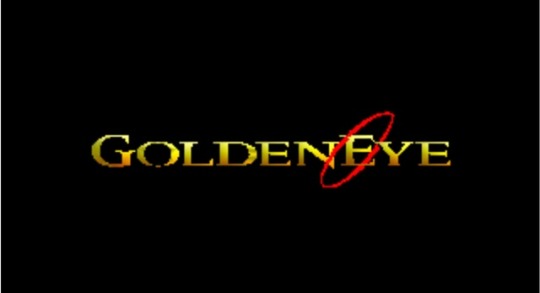
I remember being dropped off by my parents at my student accommodation and seeing the envious faces of my fellow flatmates as I walked by holding my new N64. I had literally just unpacked my suitcase when there came a knock on my dorm door, it was my mate George who lived in the room next to mine. Having heard the rumour that I’d just turned up with a new games console he was intrigued to check out the system. Together we set up the N64 on my fourteen inch CRT television and powered up Goldeneye.
As previously mentioned I had only played the first couple of levels so not wanting any spoilers I allowed George to select a new save game and start from the beginning. That evening I was due to go out with a few mates to a student club so I left George to it. Not being a big gaming fan I expected George to play for an hour or so before becoming bored. Turns out this wasn’t the case as when I returned to my room around midnight he was still beavering away having got all the way through to the Military Archives on Mission 6!
The following day I finally got the chance to delve into Goldeneye properly. Starting a fresh I must have invested hundreds of hours into this classic game over time. I’d previously played Doom on the Playstation which was a good blasting experience but Goldeneye really captured my interest. The choice of weapons, it’s diverse set pieces and mission objectives plus the open 3D environments made this game so much better than the competition. I would play and replay certain levels many times over just for the fun of it. Some of my favourites included Mission 1: the Facility and Mission 5: the Bunker.
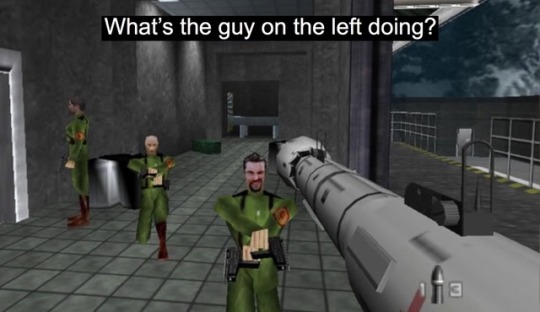
Nothing could beat the feeling of dual wielding two DD44 Dostovei pistols whilst shooting out the windows and leaving hundreds of fresh bullet holes strewn across the in-game scenery. Just as exciting was hiding a number of remote mines throughout the levels and watching the carnage unfold upon detonation or watching the enemy drop to their knees after a well placed head shot from a far. The whole experience of this game was simply wonderful and that’s before you even get into the addictive multi-player modes.

It would be a few months down the line when my mate Ste purchased his own copy of Goldeneye with a spare joypad. It wasn’t long before the four player split screen death matches were in full swing at Ste’s house. Well stocked up with beer and spirits we spent many happy evenings playing this game to the max. Trying every weapon combination possible ranging from rocket launchers to remote mines, sniper rifles to the infamous Golden Gun. We couldn’t get enough of Rare’s multi-player masterpiece.
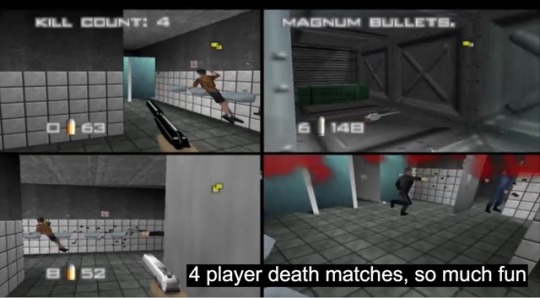
Even once I had competed all seven missions (plus the two secret stages) Goldeneye was always my go-to game whenever I had a spare half hour. Jumping straight into one of my favourite levels and causing havoc was extremely satisfying. Plus there were three difficulty settings, hidden easter eggs and many many secrets to unlock which only helped prolong the lifespan of this great game in further. I would continue to play Goldeneye well into 1998 and beyond.
Goldeneye truly was the king of first person shooters back in the late 90’s and even today I believe the single player campaign still holds up well. Sure the controls can be cumbersome at first and the 3D graphics haven’t aged particularly well but the fundamental gameplay and overall fun experience is still there. Goldeneye would remain my favourite first person shooter up until the release of Perfect Dark three years later.
0 notes
Text
Cristiano Ronaldo Introduced As FIFA 18 Cover Star, Release Date Revealed

To subscribe to Mike's articles free of charge, click on on the "subscribe" button at the top of this web page. Groups of 11 players play on a field no more than 130 yd x one hundred yd and never less than a hundred yd x 50 yd. Probably the most of those Indoorsoccer video games happen on a inexperienced grassfield, however street soccer video games are also a preferred class to with. The shortboard surfer seeks extra highly efficient strikes working the wave for momentum. There may be nothing shock that India can do all the pieces. Football just isn't only a name of a sport but it has change into a passion among the football loving folks. As more and more gamers are tackled, then there are increasingly tacklers. The soccer match was being played in Brumadinho close to Belo Horizonte, which is Brazil's sixth largest metropolis. Gamers from one line pass to players in the other line who then shoot. Barcelona will nonetheless be without a number of key gamers as they attempt to defeat the Premier League champions in what needs to be an thrilling matchup. We hope in 2018 India shall be there for FIFA world cup soccer sport. Luckily for Texas, United States of America has taken the most famous game of soccer indoors. Other fans have been intrigued by what is heard from the crowds watching the large sport. America's function in the development of soccer was minute till the middle a part of the twentieth century. This was an amateur recreation of soccer and when the ref refused their very sturdy-armed request for that pink card on the opposing workforce, that got here along with slapping and kicking from the crew.

FIFA 18 on the Nintendo Switch is a half-measure. Electronic Arts should carry the "real" FIFA to the hybrid handheld/dwelling console subsequent 12 months. However, for what it is, I still got here away impressed. EA Sports activities didn't use the most recent build of its FIFA games from the PlayStation four and Xbox One when porting the soccer sim to Nintendo Switch. While FIFA 18 on Sony’s and Microsoft’s consolesruns on the Frostbite engine that powers video games like Battlefield 1 and Star Wars: Battlefront, the Switch is running on older tech from final-generation systems. What meaning is that the Swap doesn’t look fairly as dynamic, its dribbling tech isn’t fairly as advanced, and it won’t have The Journey story mode. However I didn’t really care whereas I was taking part in the game in Switch’s portable mode, as a result of FIFA 18 is easily the very best handheld soccer recreation ever. Don’t misunderstand me: Lengthy-time FIFA fans who have already focused on the Xbox One or PlayStation four should proceed to play the game on those devices. They will look higher and have extra options. The Switch will support on-line play and the popular Final Crew mode (it’s like fantasy soccer however for FIFA), but c’mon — Nintendo’s online infrastructure isn’t mature sufficient to support all the ways individuals work together in those modes in FIFA. So what good is FIFA 18 on Swap? Effectively, it is nice for those who want a sports game on-the-go or if you want a conventional FIFA in your commute and the hampered mobile version annoys you. It’s might be a superb as a social gathering game with the choice to play with simplified controls and two Joy-Cons on the portable screen. The purpose is that I can see FIFA 18 fitting into some people’s life on the Swap as is.
Other sources will quickly be open. What Consoles Will FIFA 18 Be Launched On? If you have any concerns pertaining to where and how to use fifa 18 release, you can make contact with us at our own web-page. What New Features Are In FIFA 18? There are a lot of new options of the FIFA 18. But essentially the most impactful is the introduction of ‘Real Participant Movement Technology’. That is a brand new animation system that "unlocks the following degree of responsiveness and player personality". Related to which are new movement and ending animations which might be stated to make hanging and heading the ball more fluid. There will also be "all-new" crossing controls to permit players to get greater accuracy on their balls into the field and form crosses in alternative ways. Who Will probably be On The Cover Of FIFA 18? You possibly can simply guess this. Properly, Cristiano Ronaldo has been chosen because the cover for the FIFA 18. The real Madrid Portuguese forward has enjoyed an incredible yr so far. He completed the final season with the La Liga title and the UEFA Champions League. Add the FIFA World Club Cup and the UEFA Championship with Portugal; you will notice why he’s the favourite for the World Best Participant gong. EA has been teasing the upcoming FIFA sport for fairly a while and now EA Sports has given us the primary proper look at the upcoming FIFA 18 with a brand new trailer featuring Cristiano Ronaldo. The trailer offers us the glimpse of what to expect from FIFA 18 which can launch for Computer, Xbox One, PlayStation 4 and Nintendo Swap later this yr. In the trailer, EA showcases how they managed to get Ronaldo’s strikes tight within the upcoming game. FIFA 18 introduces Actual Participant Motion Technology, an all-new animation system which unlocks a new stage of responsiveness, and participant persona – now Cristiano Ronaldo and other high players really feel and transfer exactly like they do on the true pitch. Participant Management combined with new Team Kinds and Positioning give you the instruments to deliver Dramatic Moments that ignite Immersive Atmospheres around the globe. Talking of Cristiano Ronaldo being the cowl star for FIFA 18, according to a new report, Ronaldo as the cowl star could enhance gross sales for the upcoming FIFA recreation. The report comes from SuperData which suggests that Ronaldo being the cover star for FIFA 18 could boost the sales for the upcoming title.
FIFA 18 Obtain Computer Recreation Is A Tactical Sport. FIFA 18 on the Switch won’t run on the same engine as its PS4, Xbox One and Laptop equivalents, and won’t embrace the upcoming game’s core single-participant mode The Journey: Hunter Returns. EA Sports activities will give gamers extra selections in the brand new Journey mode, and also will let followers customise Hunter with flashy new haircuts and whatnot. WILL THERE BE ANY NEW LEAGUES? In other phrases, throughout the interval that a participant gets his TOTS playing cards in packs, it is unimaginable to hunt down his regular card there. Wigan Warriors moved from Central Park to the stadium in 1999 after the highest of Super League IV’s common season. It was going down on the Hong Kong Stadium near Causeway Bay on Hong Kong Island. The first FIFA 18 Ones to look at had been revealed fully as properly with a couple of individuals we all expected. Doubtlessly that exclusivity interval is coming to an end although and the likes of Pele, Gullit and Okocha might properly be arriving in FIFA 18 Final Group for PS4 prospects as well as those on Xbox.
Quickly after its 1863 founding in England, soccer hopped the English Channel to all the nations of continental Europe. In Germany, "fussball" took hold quickly, and by the 1920s rated as the nation’s most popular sport. In 2014, the German men’s national staff sits atop the FIFA world rankings, with the women within the No. 2 spot behind the U.S. Each tall and superbly technical but fluid squads might be counted on at the World Cup to challenge for the highest spot or come very close. Franz Beckenbauer, a sweeper for Bayern Munich, tops all lists of star players for his defensive prowess and his wins as both a participant and supervisor in the world Cup. Goalkeeper Oliver Kahn, also with Bayern, was a part of eight German Bundesliga championships and a ferocious presence on the 2002 World Cup, holding a depleted "Mannschaft" -- because the crew is known by house fans -- in contention. At any time when there’s just a goal, some audience can proceed closer into the pitch. Why is it that you need coins? FIFA is de facto a really exciting match. Nevertheless it takes a staff to engage in with the game and in addition to amass more coins. From the FIFA 18, you’ll desire more coins to make use of the perfect gamers for your workforce. If you wish to have a superb crew along with all the current stars, then you'll need more coins. FIFA 18 ought to embrace some new practices and tools to assist the players to get extra coins. You should have some easy and legal approach to earn the FIFA coins. For the every match, you’ll really have a certain quantity of these coins being a reward for the successful which is going to be strictly dependent on the involvement. You’re going to most likely be allowed to play your favourite games and in addition to become profitable by the involvement. In response to above, you'll need extra coins to employ the maximum rated players.
0 notes
Text
The Nintendo Switch hands on preview tour showcased a number of titles from the highly anticipated Legend of Zelda: Breath of the Wild to the debut of 1-2-Switch and even third party titles such as Skylanders: Imaginators. Few of these titles will be available at console launch on March 3, 2017, but they have demonstrated the innovative features that the Switch has to offer. For example, the Skylanders: Imaginators demo station had NFC-enabled Skylanders that were able to be tapped directly onto the joy-con dock. Although this installment of Skylanders is available on other consoles such as Sony’s PS3 & PS4, and Microsoft’s Xbox 360 & One, perhaps playing it on the Switch will provide a much different experience, predominately with new controller options.
#gallery-0-13 { margin: auto; } #gallery-0-13 .gallery-item { float: left; margin-top: 10px; text-align: center; width: 50%; } #gallery-0-13 img { border: 2px solid #cfcfcf; } #gallery-0-13 .gallery-caption { margin-left: 0; } /* see gallery_shortcode() in wp-includes/media.php */
Ball Count
Milk
First person debut title 1-2-Switch offers a plethora of mini games that one might associate Wii Play, Nintendoland, or even WarioWare with. These titles were featured in tabletop mode–basically gameplay using the joy-cons only, in such a way where you are to look your opponent in the eyes and actively engage with them, rather than the screen. The mini games featured at this preview event were Quick Draw, a game that measured attention, speed and aim; Milk, a game that required users to utilize certain button combinations and controller movements; and Ball Count, where players held the joy-con in their hands to use its vibrations to figure out how many balls were in the box–or joy-con to experience an added layer of realism. It was difficult to distinguish the nuanced vibrations used to count how many balls would roll or bounce around. But Quick Draw and Milk were essentially party games that one might particularly enjoy with a drink. 1-2-Switch will be launching alongside the Switch on March 7, 2017.
http://vgtidbits.com/2017/01/gallery-nintendo-switch-nyc-preview-tour/
The next demo I tried, and probably the most popular demo next to the Legend of Zelda was Splatoon 2. As expected, the demo had many similarities to the original with minor upgrades in graphics and sound. Character customization wasn’t available in the demo; only Turf War with 4v4 teams utilizing the Switch in tablet mode–much like how it was predominately played on the Wii U. However, the interface took a little getting used to. The map wasn’t as easily accessible, and therefore Squid Jumping took a little more effort. On the bright side, the Switch had gyroscope functionally that felt smoother and more natural than on the Wii U. Splatoon 2 is scheduled to launch this summer decked with new weapons such as the two-handed Splat Dualies that I was able to try at the event. As it sounds, this debut weapon are actually dual weapons whose special is a jetpack mode reminiscent of using the hover nozzle in Super Mario Sunshine to spray water.
#gallery-0-14 { margin: auto; } #gallery-0-14 .gallery-item { float: left; margin-top: 10px; text-align: center; width: 33%; } #gallery-0-14 img { border: 2px solid #cfcfcf; } #gallery-0-14 .gallery-caption { margin-left: 0; } /* see gallery_shortcode() in wp-includes/media.php */
ARMS, another first party title, is a unique combination of fighting and shooting elements. The selling point is that these characters are fighting from a distance because their arms are extendable. Furthermore, each character has a set of arms that can be customized at the start of each battle. During the demo, the joy-con controllers, one in each hand, were essentially used as fists. Through a mix of boxing-like gestures, the player is able to punch straight, make curved attacks, or even grab the opponent. Although I wonder if there are general controller settings as slight gestures were registered as swings. Perhaps the upside is that the player would be able to swing faster than someone who has to extend their arm all the way out. Arms, launching later this Spring, will also be playable using the pro controller.
#gallery-0-15 { margin: auto; } #gallery-0-15 .gallery-item { float: left; margin-top: 10px; text-align: center; width: 50%; } #gallery-0-15 img { border: 2px solid #cfcfcf; } #gallery-0-15 .gallery-caption { margin-left: 0; } /* see gallery_shortcode() in wp-includes/media.php */
Snipperclips – Cut it out, together! was an underrated puzzler where the players cut their paper characters into different shapes to solve the puzzle; whether its sharpen the pencil or pop all of the balloons. The two-player demo encouraged teamwork and creativity in solving the puzzles, cutting the right shapes, and timing everything. The controls were intuitive with one button to cut shapes, another to grow back their cut forms, and an option to crouch or tippy-toe for extra height. Snipperclips is launching this March and will be available exclusively on the Nintendo eShop.
Demo Line up includes:
1-2-Switch
Arms
Disgaea 5
Fast RMX
Has Been Heroes
Just Dance 2017
The Legend of Zelda: Breath of the Wild
Mario Kart 8 Deluxe
Puyo Puyo Tetris
Skylanders: Imaginators
Snipperclips – Cut it out, together!
Sonic Mania
Splatoon 2
Super Bomberman R
Ultra Street Fighter II: The Final Challengers #gallery-0-16 { margin: auto; } #gallery-0-16 .gallery-item { float: left; margin-top: 10px; text-align: center; width: 33%; } #gallery-0-16 img { border: 2px solid #cfcfcf; } #gallery-0-16 .gallery-caption { margin-left: 0; } /* see gallery_shortcode() in wp-includes/media.php */
#NintendoSwitch Hands-on Preview with 1-2-Switch, Splatoon 2, Arms and Snipperclips The Nintendo Switch hands on preview tour showcased a number of titles from the highly anticipated…
0 notes